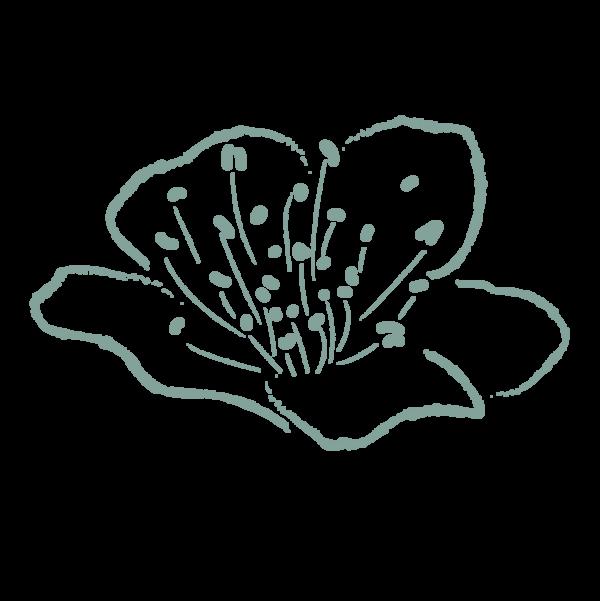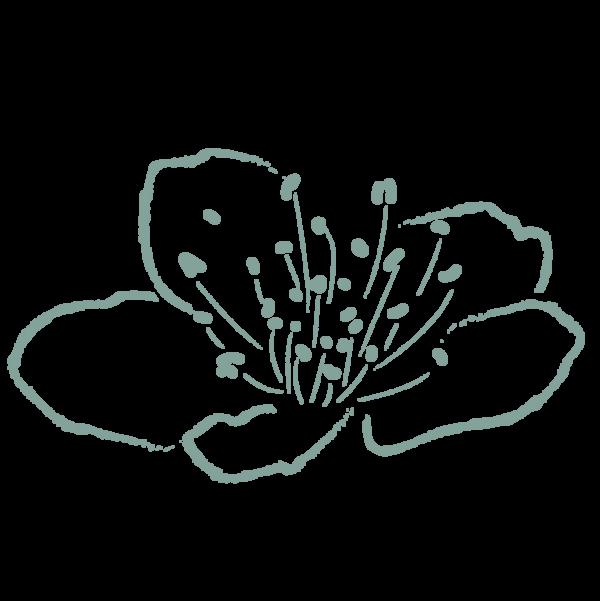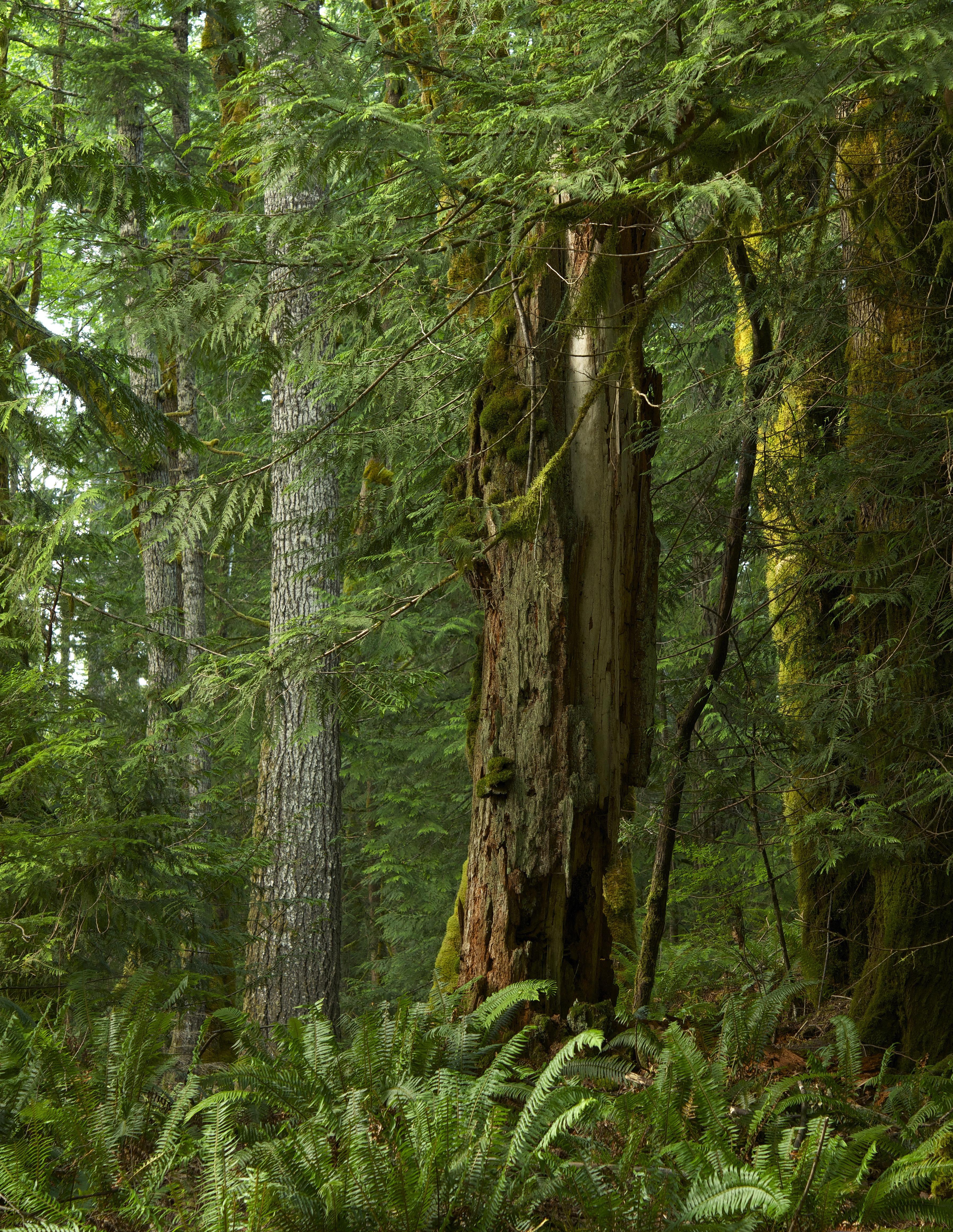




It has been a while since we last issued Love & Regeneration, and we are very much overdue for communication with our friends, clients and colleagues. But we have a good excuse! It has been a season of change that started early this year and only more recently is now very public news. In July of this year, McLennan Design merged with Perkins&Will – one of the world’s most influential design firms, with the goal of helping us greatly scale our mission to make the building industry more focused on ecologically regenerative work. McLennan Design has always admired the work and ethos of Perkins&Will and had recently collaborated with their Seattle Studio on a net zero energy project in Bellingham, WA. After very careful consideration and discussion, we ultimately decided that we were much, much stronger as part of a larger vehicle of change. Since July it has been a whirlwind of activity, as we not only continue to service all of our existing clients – but also become more integrated into the daily practice of life in a big firm that has offices on nearly every continent.
While the merger has brought many exciting new opportunities, it is worth noting that our entire MD team continues to operate on Bainbridge Island (as well as our satellite team in Kansas City) and work is underway on our new office facility in historic Fort Ward, Bainbridge Island. In essence, we are now the ‘rural studio’ of the parent company – providing cutting edge, leading thinking on regenerative design and consulting work. So, while many things have not changed, we have at our disposal now a vast array of talent, experience and knowledge to further elevate everything we do. For my part, I am now serving as the Chief Sustainability Officer for the company globally, while continuing to lead design and consulting out of our studio. We are excited for what 2023 will provide us all!
This issue has some important contributions: a reprint of our good friend David Korten’s essay, Ecological Civilization - from Emergency to Emergence, that we feel everyone in our community should read; an interview with Phil Harrison – CEO of Perkins&Will who talks about our merger and more; as well as a focus on our recently completed HMTX World Headquarters and other interesting goings-on in the industry.
So as the year draws to a close, we all hope that this issue provides a few minutes of holiday cheer and positive information!
Sincerely,
 Jason F. McLennan Principal, McLennan Design Chief Sustainability Officer, Perkins&Will
Jason F. McLennan Principal, McLennan Design Chief Sustainability Officer, Perkins&Will
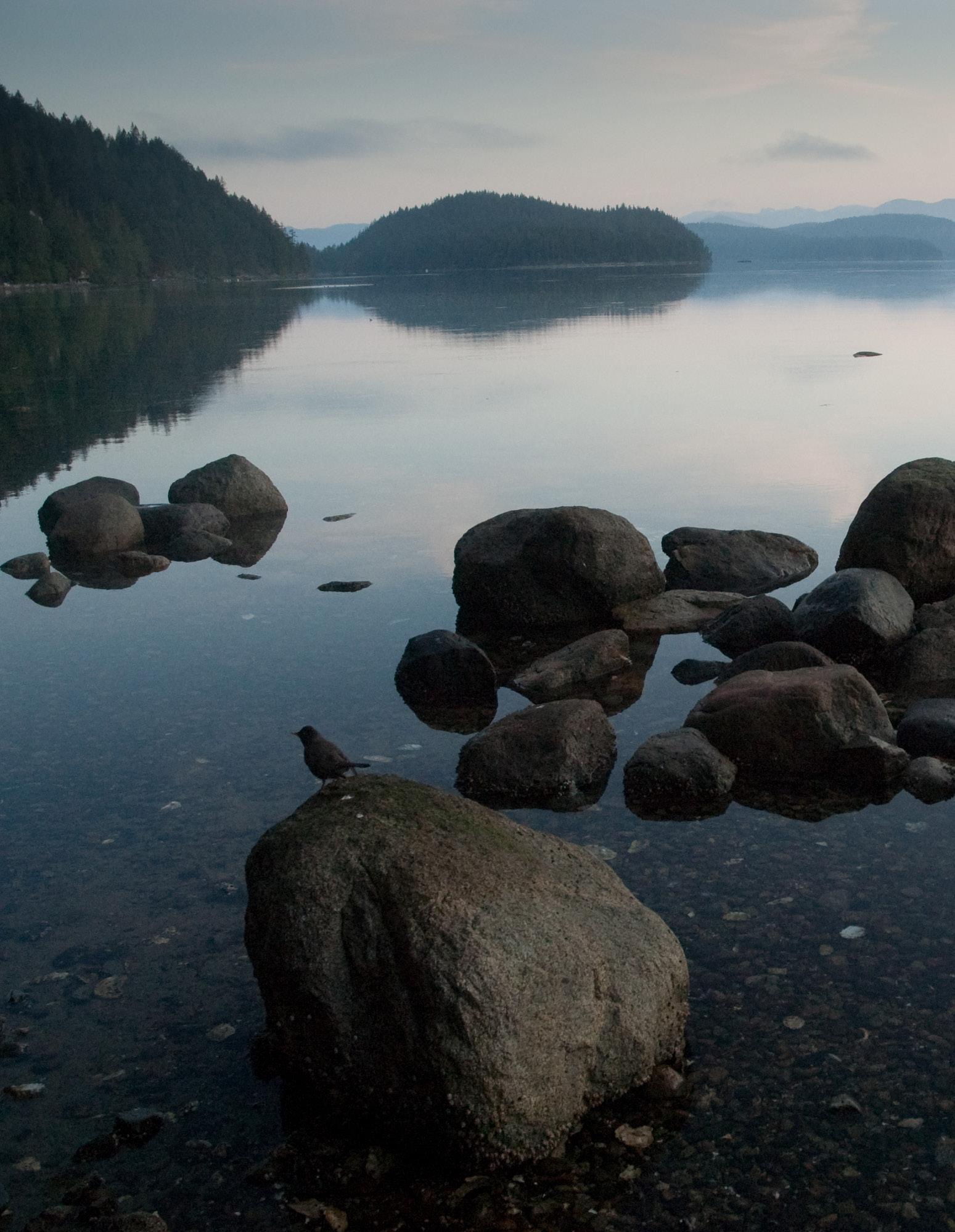
WINTER 2022




 JASON F. MCLENNAN SUSAN CROY ROTH GALEN CARLSON
JASON F. MCLENNAN SUSAN CROY ROTH GALEN CARLSON
McLennan Design respectfully acknowledges the Suquamish and Duwamish peoples, who, throughout the generations, stewarded and thrived on the land where we live and work.
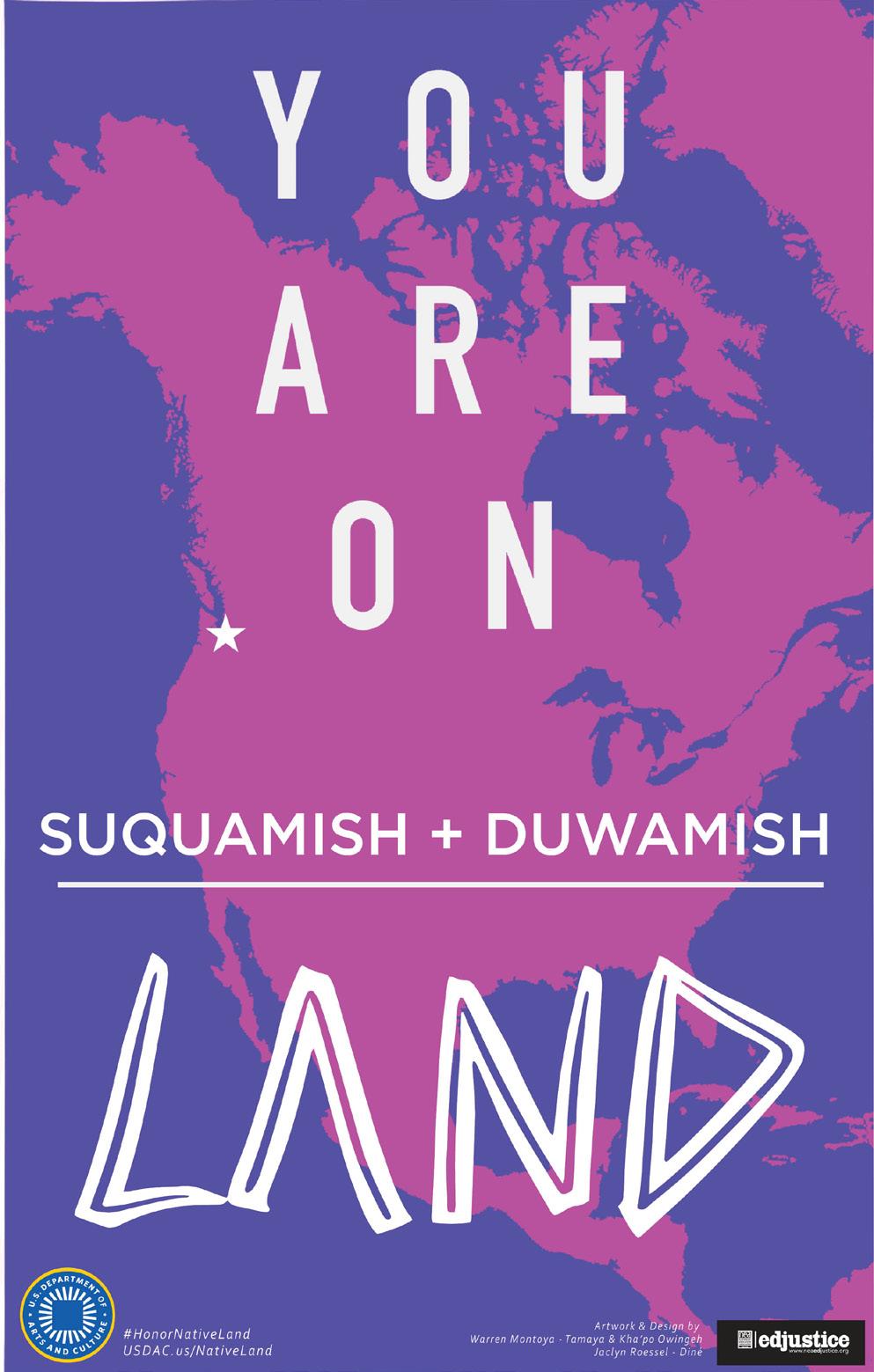
December 2022, Volume 5, Issue 1
LOVE + REGENERATION is a quarterly publication of McLennan Design, LLC. © 2022 by McLennan Design / Perkins&Will. ALL RIGHTS RESERVED. Content may not be reproduced in whole or in part without written permission and is intended for informational purposes only.
Cover Photo: HMTX World Headquarters: Paul Godwin

McLennan Design Merges with Perkins&Will Q&A with Phil Harrison
David Korten Ecological Civilization
Remember Who We Are By Melissa Myers
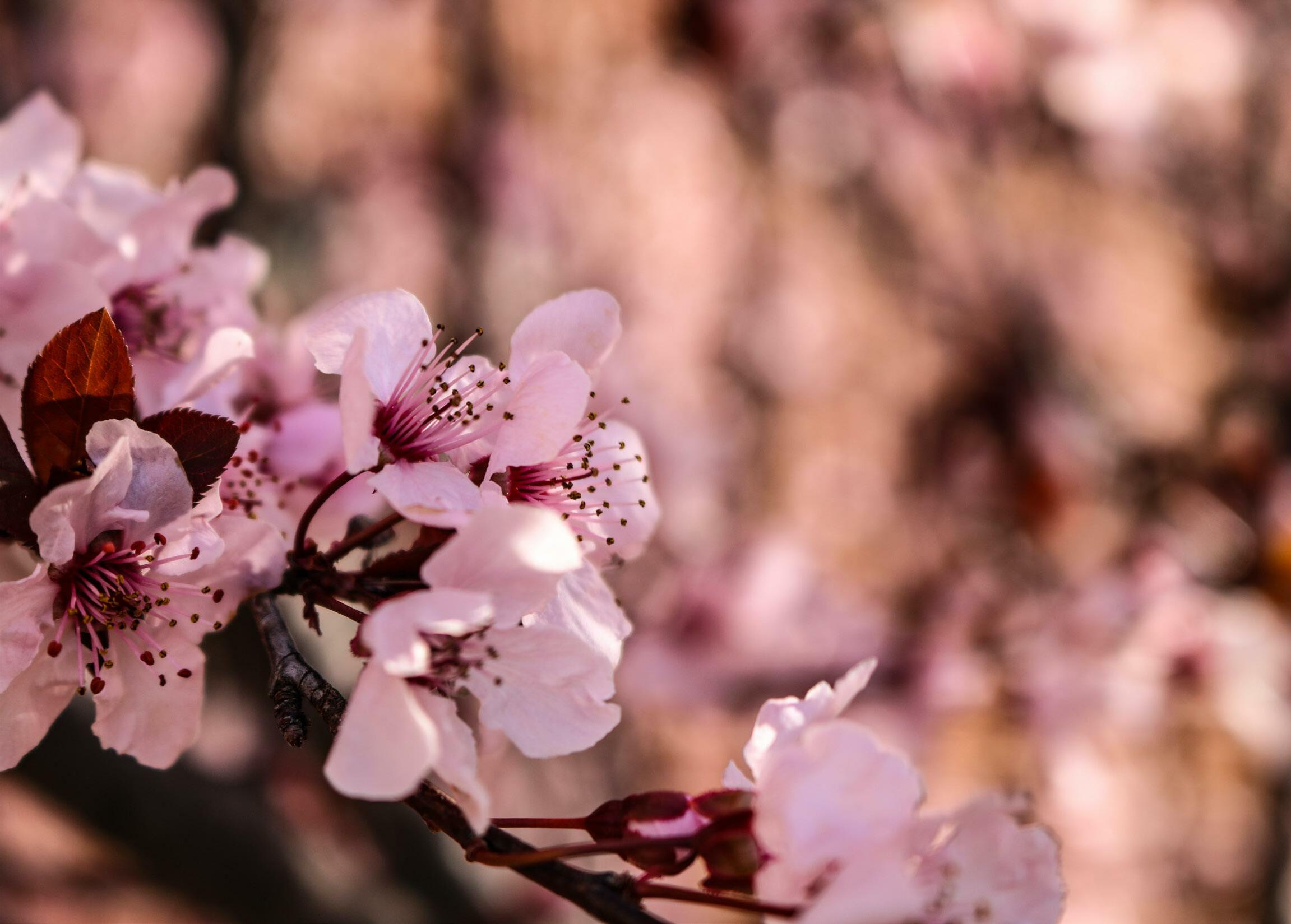
HMTX House on the Hill LBC Project in CT
Christopher Alexander Honoring a great thinker
Tile 2.0 - How Italian Ceramics are Changing the Game Galen Carlson’s trip to CERSAIE 2022
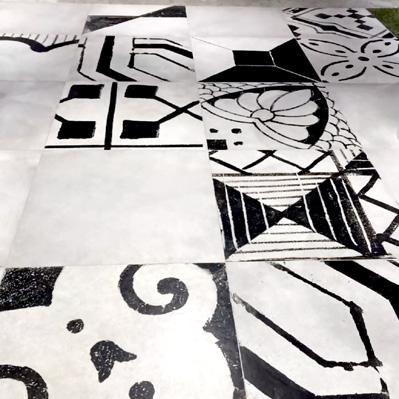


Perkins&Will joined forces with McLennan Design in 2022
What are you most excited about with the acquisition of McLennan Design – why was this the right time now?
People and knowledge. Both Perkins&Will and McLennan Design are fueled by passionate and curious teams—this is what has made us successful. We fully expect McLennan Design’s people and knowledge to be a catalyst in Perkins&Will, driving an even more successful future together.
How does this expand or grow Perkins&Will’s mission regarding sustainability and living design?
McLennan Design’s sustainability knowledge will be a force multiplier for our combined future. Our objective is to intensify and expand our sustainability expertise. The challenges before us require us to deepen and widen our approach, and that is what we are going to do.
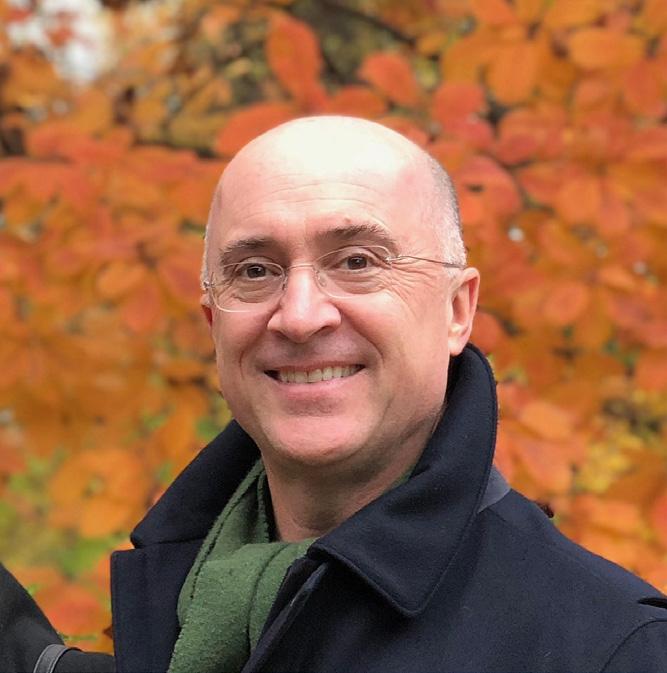
What should McLennan Design’s existing clients know about how the merger will affect their customer service and what we can now do together?
We are a large firm that behaves like a small firm, very much like McLennan Design , but bigger. McLennan Design clients should expect to continue to experience everything they love about McLennan Design , including their day-to-day teams; but they will have access to much larger resources to support their objectives more expansively.
How do you see McLennan Design thriving within Perkins&Will? What would be the best possible outcome of McLennan Design joining Perkins&Will?
Our goal is impact. The best possible outcome is that McLennan Design and Perkins&Will together transform the design and construction industry substantially more than we already do. It is hard to quantify this now, but this should be much more than 1 + 1 =2. “Force multiplier” means that our firms coming together will have a 10X impact.

When did you first realize that Architects have a role to play in mitigating climate change and creating conditions for life to thrive? What do you believe that role is?
This is a fundamental issue that I think all
architects believe as soon as they enter the field, whether they act on this role directly or not. I see this as an awakening of empowerment. As an industry, we are learning that our impact scales directly with us taking a more active role. The industry has too long tried to avoid liability, and this has marginalized us. In fact, design professionals can have an outside influence on the built environment, and this empowering attitude is taking hold in our industry today, especially at Perkins&Will/McLennan Design .
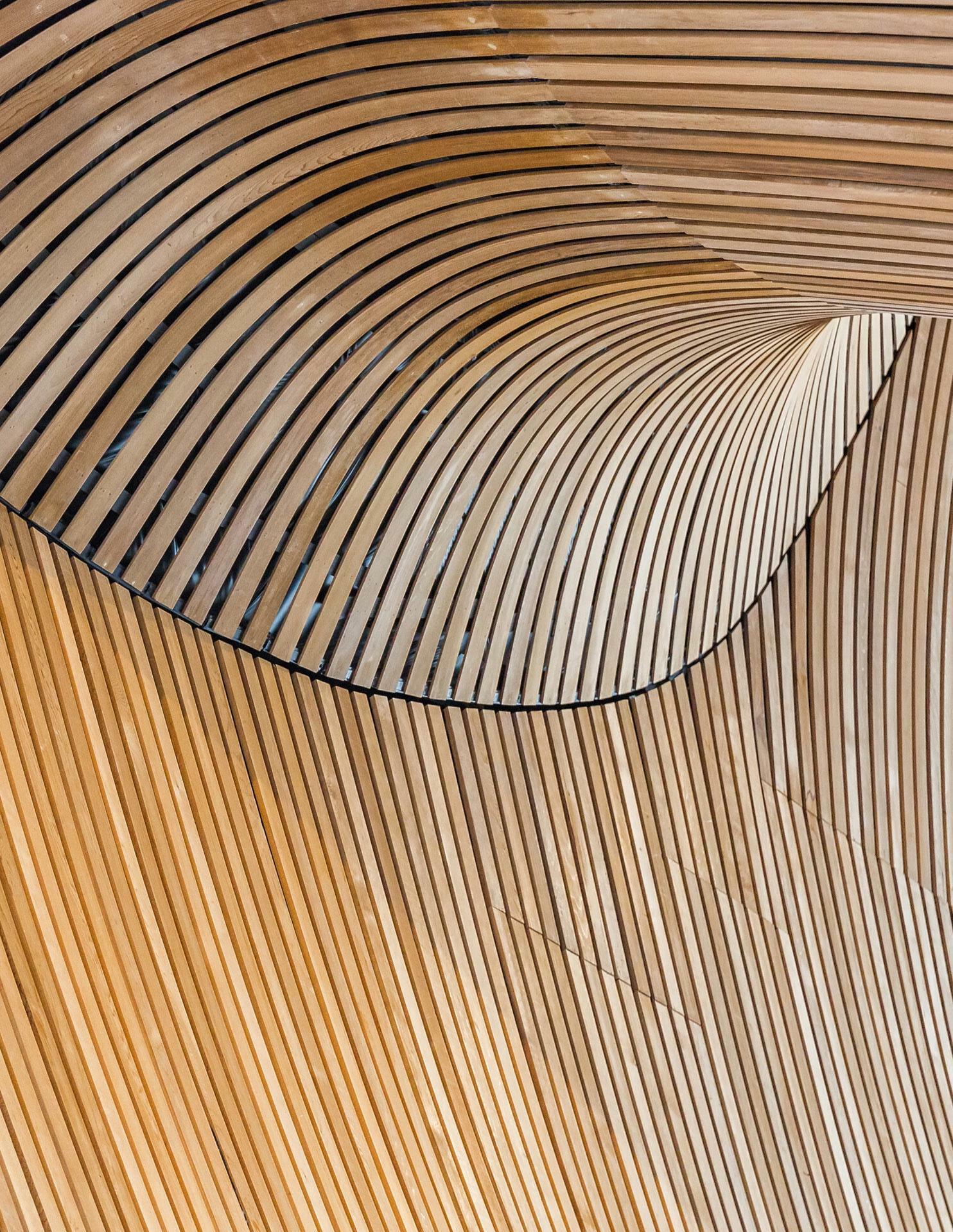
What do you believe our firm and profession can do to improve diversity and equity?
We need to do a lot more than we realize or accept today. Principally, we need to evolve who we are, moving towards being as diverse as our clients and communities. At the same time, we need to change the way we design, considering equity as a fundamental design driver in all our work.
If there was one gift or legacy that you/we could leave for the next generation, what would that be?
Build an organization that is equally loved by our clients, our staff, and our industry because we do good, and we do well. This will require increasing the agency of design professionals, empowering our teams to lead on every level.
What was it that first drew you to Architecture, and what has been the biggest surprise you found in your journey?
Before design school I was an artist and art educator for a few years. I love pure creativity, but I was drawn to the synthetic creativity of the design professions because we deploy our creativity to solve real world problems with economic, social, technical, and environmental constraints. This is more difficult and ultimately more interesting.
What do you think the role of the next generation would/should be?
Empowering design leaders means empowering all design leaders, not only those who are established in their careers. Next generation design thinkers should be central in all dimensions of practice because we are designing for the future, and this is literally the future for next-generations. Right now, our firm has a short-term goal to “unleash talent”, by which we literally mean that we are asking next generation leaders to take on leadership roles much earlier in their careers than we have in the past.
How has Perkins&Will sought to maintain the unique voice + vision of the firm as it has expanded to now be a global entity?
Staying freshly relevant requires discipline. We start by realizing that natural momentum in large social systems is towards average, a kind of corporate entropy. Then we do everything we can do to inspire curiosity, passion, action and creative expression. Out of this emerges a panoply of highly personal, powerful voices. This diverse personalized energy is our emerging experience; it is not a unique, singular vision so much as a resilient network of people, talent and ideas.
How do you think the Architectural industry will need to evolve in order to adapt to continuously changing technologies, priorities, and cultures?
We will continuously reinvent the profession, through research and restless curiosity, while we increasingly deliver to meet higher order human and environmental needs. As the challenges scale, so too should the art and science of architecture and design.


This we know. We are a complex choicemaking species with extraordinary physical and intellectual abilities. We have a deep longing to know ourselves, from whence we came, our possibilities, our fate beyond death, and the purpose of our being. We are also a highly social species with a deep need to connect with one another and nature. Yet many among us have been lured into a self-destructive competitive quest to dominate and exploit one another and Earth in pursuit of individualistic material self-gratification unrelated to our true needs and nature. This misdirection is reinforced by corporate media’s veneration of the winners in a predatory and ultimately dehumanizing economy.
The perversions have become so commonplace that we assume they are inherent in our nature. Yet, we know we are capable of so much more. And as we develop a deeper understanding of what gives us true satisfaction, we realize that creating the world we want requires that we give up only that which dehumanizes us and propels us toward self-extinction.
Hope lies in our extraordinary, distinctive, and increasingly self-aware capacity to envision and choose our common future. This is our time to rediscover and reclaim that which makes us truly human.
Every living being, from microbes to humans, faces continuous life and death choices such as what to eat, drink, and with whom to ally and from whom to flee in the complex and everchanging territory it inhabits. In making these choices, each being depends on the guidance of learned or genetically inherited maps of its territory. Because that territory is forever changing, successful living beings are forever updating their maps as they learn, evolve, and pass on their learning from generation to generation.
Humans are Earth’s most sophisticated mapmakers. Indeed, our drive to
understand ourselves and our relationship to one another, Earth, and the cosmos is part of what makes us distinctively human. The maps that guide our choice-making as individuals, families, communities, and societies find expression in distinctive personalities, cultures, traditions, religions, ideologies, laws, and scientific disciplines. That diversity is essential to our resilience and creativity as we move forward together in a process much like a flowing creative dance.
Our human maps need continual correction, updating, and elaboration. Some are simply wrong and are best discarded. Because our maps are products of the human mind, we can quickly and easily correct or discard a map simply by changing our mind.
Changing our behavior, however, is more difficult once society has organized around a defective map, taught our children to rely on it, and organized our institutions, technology, and infrastructure based on its assumptions. Furthermore, we will get the new maps right only if we view the
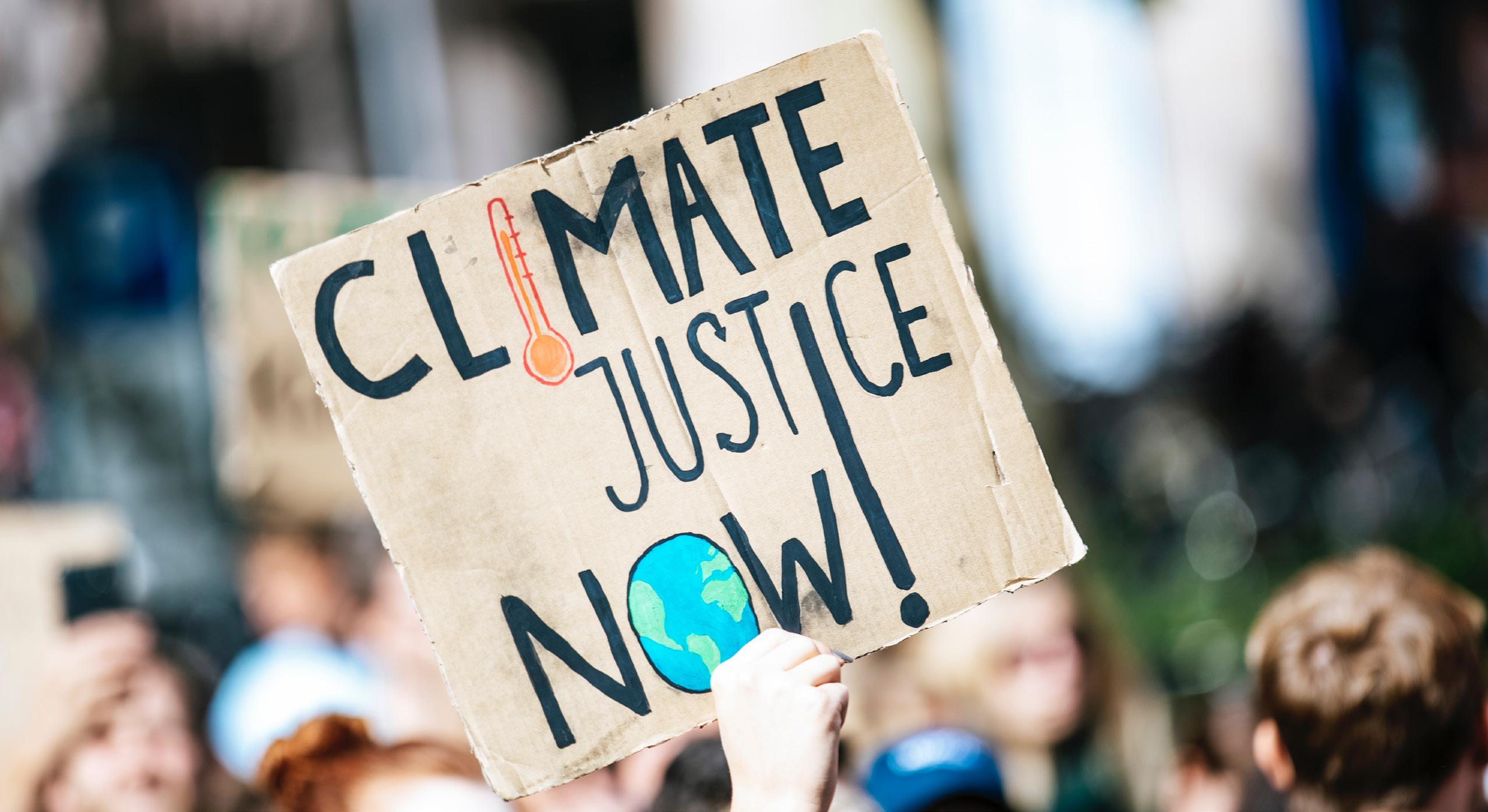
relevant territory through a lens that allows us to see life in its complex interdependence and ourselves as distinctively self-aware, choice-making living beings with profound responsibilities to and for the whole.
Among our current mapping failures, one has had particularly devastating consequences. It is our misadventure with a perverse version of economics that has become a dominant, dehumanizing political ideology. I refer to the ego-nomics that celebrates and promotes the self-centric pursuit of rapid, individual financial gain to support needless dehumanizing consumption that strips Earth of its unique capacity to sustain life. It displaced the eco-nomics of Adam Smith, David Ricardo, Henry George, Thomas Malthus, and Karl Marx devoted to identifying the sources of the wellbeing of the human household.
Finding our way to the possible future we seek will require the lens and maps of an authentic, significantly updated eco-nomics grounded in a deep understanding of life and a vision of the Ecological Civilization now within our means to live into being. Before we turn to the challenge of producing the maps of a new eco-nomics, however, we must clean up and sharpen the lens by which we view our present and future territories to assure we are clear on the nature of humanity’s crisis, how and why we got into it, how healthy life organizes, and the essential characteristics of the future we seek.
According to estimates of the Global Footprint Network, it would take 1.7 Earths to sustain current levels of human consumption. We have only one Earth. Yet we continue to grow the human threat to the viability of Earth’s community of life by pursuing further growth in consumption to grow Gross Domestic Product (GDP) as humanity’s defining priority.
Little if any benefit from current GDP growth accrues to the billions of Earth’s people who face a daily struggle to fulfill their needs for food, water, shelter, and other essentials of their existence. Consumed by that struggle as they rush between jobs separated from family, community, and nature they find little opportunity to experience the joy of living. This results in high rates of suicide and mental illness and provides fertile ground for demagogues stirring up hatred and violence.
As the collapse of our interlinked environmental and social systems renders ever more of Earth uninhabitable by humans, millions abandon their homes in fear and sadness to seek refuge in what remains of Earth’s still livable places. Simultaneously, a favored few squander Earth’s bounty in displays of extravagant excess.
According to Oxfam, in 2019 the combined financial assets of 26 billionaires were greater than those of the poorest half
of humanity. In the United States, the collective assets of the wealthiest 1 percent exceeded those of the bottom 90 percent. The economic disruption of COVID-19 widened that gap so rapidly that financial news services now report by how many billions of dollars the fortune of each of the world’s richest billionaires grows or shrinks each day. During the COVID-19 year from March 18, 2020 to 2021, the combined wealth of the planet’s 2,365 billionaires increased $4 trillion or 54 percent.
Hard to miss the reality that the current economic system is far better suited to growing the financial assets of billionaires than to securing for all access to food, water, healthcare, vaccines, and other necessities. Living far beyond the means of a finite living Earth, we face a monumental civilizational challenge. A viable human future depends on three inseparably interconnected steps:
1. Acknowledge the limits of the regenerative capacities of Earth’s community of life.
2. Commit ourselves to the equitable sharing of what remains, and 3. Join in a shared commitment to restore Earth to full health while reconnecting us with one another and nature to secure a good life for all people for all generations to come.
According to estimates of the Global Footprint Network, it would take 1.7 Earths to sustain current levels of human consumption.

Thefailures of our global economy have been accumulating year after year, decade after decade. Public support for this destructive path is maintained by the false promise of ego-nomics that so long as we maintain our focus on growing GDP, the ultimate result will be a future of effortless leisure, comfort, and ever-growing material affluence for all.
To this end we embrace making money as humanity’s defining goal. Governments compete with other governments to achieve the highest GDP growth rate. Businesses compete with other businesses to generate the greatest short-term profits. We the People support all of this while competing with one another for available jobs at whatever wages are currently offered.
That the promises of ego-nomics are false has become glaringly evident. This strikes a devastating blow to the credibility of our defining institutions. Fortunately, we are now awakening as a global society to the reality of a political-economic system designed and managed to exploit the many for the benefit of the few.
In the Ecological Civilization of our future, we may compete in our human quest to serve, create, and beautify, but never in an egoistic quest to destroy or dominate our neighbor.
The current self-destructive system
distracts us from its failure by forcing us to compete to obtain the money to survive - or to buy the next consumer trinket. As a result, we rarely step back to reflect on the nature and meaning of life; on how our human experience can and should allow us to experience expansive love and the fulfillment that comes from lives of service to the wellbeing of our neighbor, Earth, and thereby of ourselves. For many of us, COVID-19 has served as an aha moment.
Fortunately, people worldwide are beginning to unite across social strata to imagine and create a future consistent with three foundational truths:

1. Humans are a choice-making species of many possibilities. This truth is demonstrated by the immense diversity of cultures and institutions humans have created and lived by during the span of our existence. We have demonstrated our ability to cooperate, care, and share. We have demonstrated our ability to compete, kill, and exploit. What defines our distinctive nature is our ability to make shared cultural and institutional choices that in turn shape our individual and collective relationships and common future. The
happiest among us are most often those who have become most adept at cooperating to care and share. We now face our ultimate choice.
2. Human wellbeing depends on the wellbeing of the living Earth. All living beings depend on living communities of organisms that self-organize to create and share through their labor the conditions essential to life. We are all children of the living Earth that birthed and nurtures us. Our human wellbeing depends on Earth’s wellbeing. Living Earth long prospered without humans, but we cannot exist apart from the wellbeing of Earth’s community of life. Restoring Earth’s health through the wise application of our intelligence and labor must be a defining human priority.
3. The drive to grow money imperils the human future. Money is a number that has value only when other people offer something to sell that we need or desire. Useful as a tool, money becomes dangerous when embraced as a purpose. Making the growth of monetary exchange and financial assets the defining purpose of society is an act of collective insanity. The majority suffer so the few, mostly those who already have more than they need, can grow their financial assets. The process leads ultimately to human self-extinction. There are no winners on a dead Earth.
We are all children of the living Earth that birthed and nurtures us. Our human wellbeing depends on Earth’s wellbeing. Living Earth long prospered without humans, but we cannot exist apart from the wellbeing of Earth’s community of life.
The most precious gift of our human experience is the opportunity to feel the joyful exhilaration that comes from fulfilling our responsibility to share in the care of life. Too many of us are denied this opportunity because of a system that isolates us from one another and nature as it reduces us to a constant struggle for survival. None of us will be secure in our opportunities to experience the special joy of being human until we act together to secure such opportunities for all.
To understand and embrace our distinctive human responsibilities and opportunities, we must understand life’s journey and needs.
Life is matter possessed of the capacity to choose as it creates and maintains the conditions essential to life’s existence in its eternal struggle against entropy. In its most advanced forms, life organizes at multiple levels to act as if with conscious intention and foresight. Surely, we humans, with our exceptional capacity for self-aware choice-making, can do the same.
Start with our most intimate experience with the extraordinary miracle of life - our own bodies. Only very recently has technology advanced sufficiently to reveal the extraordinary nature and dynamic of the human body’s genetic and cellular structure.
The human body - the vessel of our consciousness and vehicle of our agency - is a community of tens of trillions of interdependent, decisionmaking, regenerating living cells and microorganisms. They are continuously engaged in a self-managed exchange of nutrients, water, energy, and information mediated by the body’s heart, lungs, liver, brain, and other organs. In addition, each cell type is regenerating through life’s eternal
cycles of birth and death, all the while accumulating and building on the learning passed on from generation to generation. We are because they are.
We know that not all the body’s cells and micro-organisms recognize and fulfill their responsibility to and for the whole. Cancer cells and COVID-19 viruses are well-known examples. Seeking only their own reproduction and competing to control and consume the body’s available energy and nutrients, they act as if they have been misdirected by the false maps of their equivalent of ego-nomics.
We also know that a functioning body is not self-contained. I depend on my body’s continuing exchange with the larger community of life to which I belong and on which I depend for food, water, air, a stable climate, waste recycling, and companionship. I am because of the bees that pollinate. The trees that produce oxygen. The beetles that decompose dead plants to replenish the soil. The microbes that digest the food in my gut and recycle my wastes. And the people who love and care for me as I love and care for them.
Without these many, diverse beings, Earth would be just another dead rock floating in space. And I would not experience the miracle of life. If any aspect of this internal and external interdependence suffers serious disruption, I die. It is the same for every living being, including the living Earth.
Earth is a vastly larger and more complex organism than an individual human body. Yet like any multi-celled organism, Earth survives as a living being only so long as its countless individual organisms self-organize to create and maintain the conditions of climate, pure water and air, fertile soil, and countless other conditions on which life depends.
It did not just happen. It was a difficult journey of learning and becoming over some 3.7 billion years, as life evolved from microbial life forms to living organisms of ever greater physical and cognitive abilities. Humans - living beings able to shape the future of life on Earth with conscious collective intention - are currently life’s most advanced expression of this capacity. However, we have yet to achieve the wisdom to use that capacity responsibly as a now globally interconnected species.
Notably, nowhere in the constant complex exchanges between members of Earth’s nonhuman species do we find equivalents of the human institutions of money, government, or business. This reality is both humbling and reassuring. It is humbling to acknowledge what other species accomplish without such props. And reassuring to recall that, until relatively recently, humans did as well.
Our distinctive capability to shape our relationships with one another and Earth through our intentional choices of culture, institutions, technology, and infrastructure give us the potential to achieve a much-needed civilizational transformation. Given the state of our current crises, it is a transformation we must make with what may seem impossible speed. Is it possible? We will know only if we try. Here is what our history tells us.
To be born human is to be gifted with an extraordinary potential to experience wonder, beauty, love, and the satisfaction of contributing to the learning and wellbeing of life. No human should be denied the opportunity to actualize that potential.
The human journey has been long and sometimes difficult, but the
accomplishments during the roughly 200,000 years since homo sapiens first appeared in Africa are extraordinary. For roughly 190,000 years, we organized exclusively as nomadic hunter-gatherer tribes, some warring against one another and others learning to share and live in cooperative harmony.
We began moving out of Africa to populate the rest of Earth only some 70,000 to 100,000 years ago, adapting to extreme differences in climate and other conditions along the way. As we adapted, we developed our capacity for complex languages, each tribe developing its own language largely unintelligible to its neighbors.
It was only about 10,000 years ago that we began the transition to settled agriculture. Some 5,000 years later, we began developing city states, followed by the nation states that came to define the imperial era that prevails to this day.

It is an era marked by extraordinary technological and artistic advances combined with unconscionable violence against and repression of both people and nature. Commonly referred to as civilization, for most people their experience of this era has fallen far short of civil.
Over just the past few centuries, transnational corporations have superseded nation states as the dominant institutions in control of land, labor, technology, and money. Power thus shifted from governments presumed to be democratically accountable to their people, to transnational corporations that acknowledge responsibility only for maximizing short-term financial returns to their wealthiest shareholders and claim the right to buy political favor by funding politicians in any country
The most precious gift of our human experience is the opportunity to feel the joyful exhilaration that comes from fulfilling our responsibility to share in the care of life.
in which they do business.
Humanity’s societal changes now come at an ever more breathtaking pace. Intentional or not, the deadly consequences of the choices of our shadow-side over the past 5,000 years now give us an unprecedented opportunity to choose a different path.
Just within the lifetimes of members of my generation, the barriers of geography have largely disappeared as humans melded into an interconnected, interdependent global species. I was born in 1937, just two years after the first telephone call was transmitted around the world by wire and radio. In the 1960s I traveled in Africa and Asia when the only communication with home in the United States was by snail mail. English has since become a common global language; and our audio and visual communications now have the potential to link every person on Earth into a seamless web with instant fingertip access to one another and the whole of human knowledge. During this same period, our knowledge of ourselves and our place in the cosmos has expanded at near light speed. We now peer into previously invisible inner worlds of microorganisms and subatomic particles and look outward to observe ancient galaxies whose light has taken 13 billion years to reach us. We manipulate the genetic structures of organisms and the regenerative structures of Earth. We visit our moon, send rockets to nearby planets, and envision the possibility of bringing them to life.
On the dark side, these same technologies give current and aspiring powerholders the ability to manipulate the human mind to further subvert the many to the will of the few. We consequently present an increasingly deadly threat to ourselves, to the Earth that birthed and nurtures us, and to the evolutionary unfolding of life. The COVID-19 pandemic is a reminder of our ultimate vulnerability - a call to recognize and embrace our responsibility to one another, life, evolution, and creation.
Humanity’s positive potential and our current destructive path define a choice: embrace the possibility of transforming our relationships with one another and Earth; or perish. That choice constitutes an epic opportunity to accept the responsibility that comes with our nature as beings with distinctive abilities.
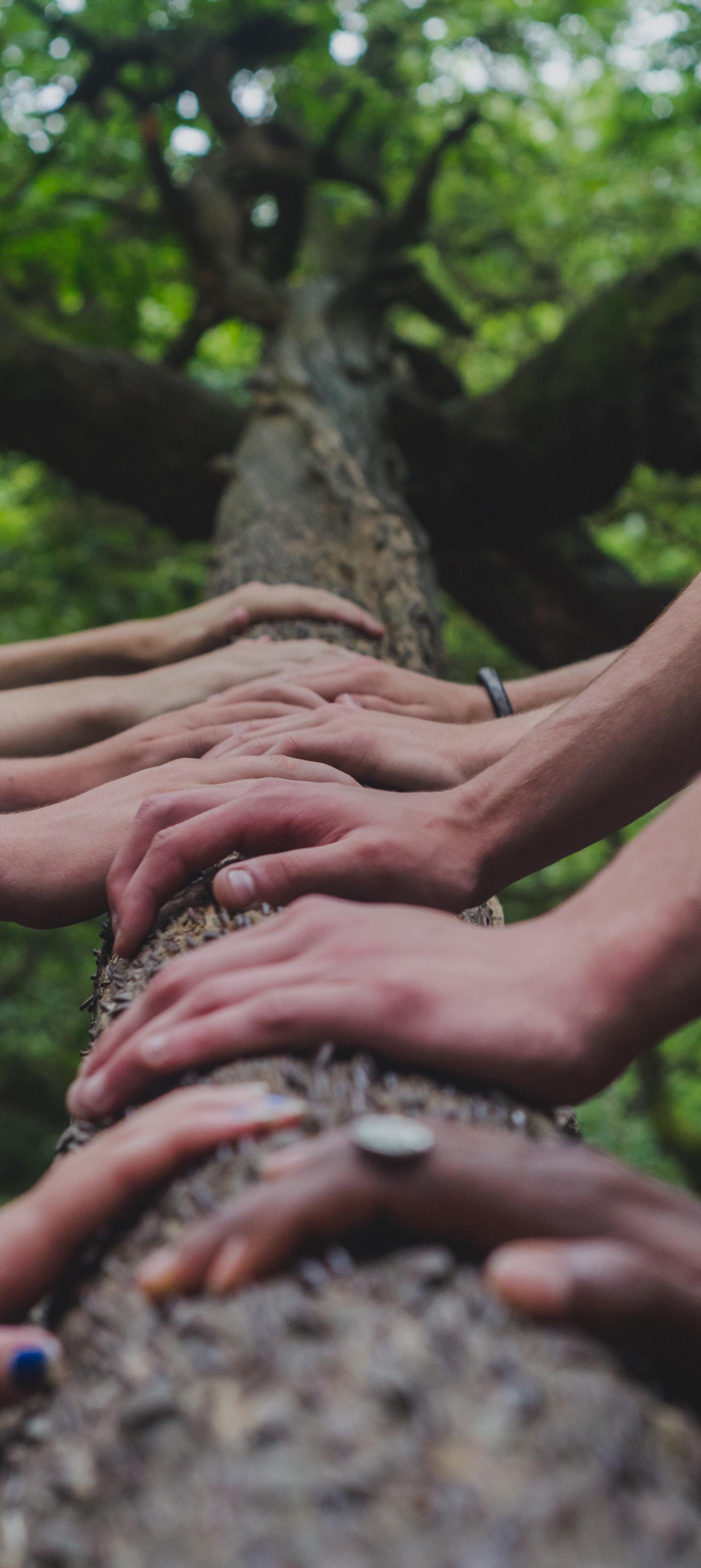
Modern society is commonly described as divided into three institutional sectors: government, business, and civil society. Government maintains order. Business provides our means of living. Civil society, often described as the Third Sector, is the people’s sector.
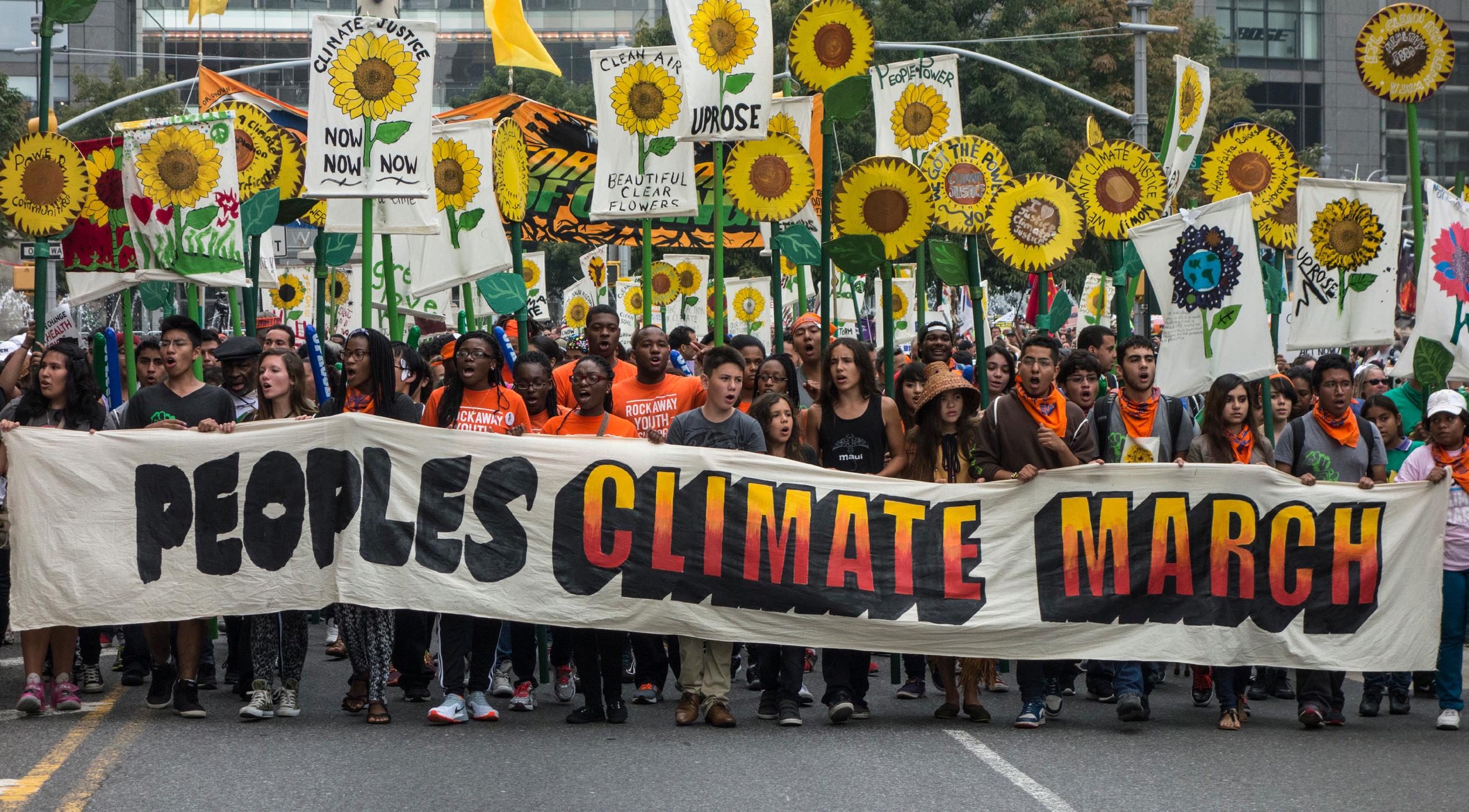
Civil society is where We the People self-organize to place a check on government and corporate excess and to lobby politicians to fulfill otherwise unmet needs for peace, the well-being of all people, and the health of living Earth. That there should be such special need suggests the depth of the current failure of the institutions that we and our forebearers created.
Early humans self-organized as civil societies to meet their daily needs through their labor from what the land provided, first as roving tribes and then as settled communities separated by geography and language. What we now consider as the functions of government and business, were once indistinguishable from daily community life. As human numbers grew and competition for products of the land increased, powerful rulers emerged to maintain order and expropriate the surplus of the labor of land and people.
The early rulers of what became a 5,000-year imperial era, imposed order by force of arms and their control of intercommunication between communities defined by competing cultural identities and languages through the institutions we now know as government. Peoples who did not organize as imperial states became dominated by the armies of those that did. Through this process, the institutions of government emerged as instruments by which the few ruled the many. Ever more of the labor of people and nature has since been consumed in competing for positions of privilege, maintaining order by the exercise of military, police, and judicial powers, and supporting displays of opulent excess by the few amidst the deprivation of the many. This results in dehumanizing mental and physical stress that leads to further system dysfunction.
As the rise of democracy began to restore civil society’s people power, aspiring autocrats turned to money as their favored instrument of societal control and succeeded in subordinating the partially democratized government sector to a business sector devoted to further de-democratization of government. The ultimate power to rule passed to transnational corporations that control the financial and media resources that government’s democratically elected politicians depend on to win elections.
While institutional power has shifted, the social structures that define the imperial era continue to feature four primary social castes determined largely by birth and engaged in a life and death competition for power within and between:
The caste system rests on the foundation of the excluded caste. Reduced to a daily competition for survival on whatever scraps are discarded by members of the three superior castes, the plight of the excluded secures the loyalty of more favored castes to the dominator system by keeping us all fearful of the fate that awaits us if we fail to conform. Domestic and stateless refugees, the homeless, and the imprisoned are among the most visible members of this caste.
Members of this caste are health and childcare workers, teachers, cleaners, agricultural workers, store clerks and countless others who do the essential work on which the entire system depends. The surplus from their labor is extracted and controlled by the ruling and retainer castes.


These are persons whose loyalty secures the power of the ruling caste. They traditionally included military officers, tax collectors, judges, religious leaders, and influential artists and philosophers, all well compensated for their loyal service in securing and legitimating elite rule while keeping the worker caste in line and the excluded caste in its place. Now it includes influential academics and persons with advanced technical, media, and marketing skills required to control the crafting, legitimation, and presentation of society’s defining maps to assure that they affirm elite rule.
Originally, this caste featured imperial families headed by a king, queen, or emperor. Now the ruling families are headed by the world’s richest billionaires, most of whom hold a controlling individual or family interest in one or more major transnational corporations. The power of the ruling families depends on gaining control through their corporations of the means of human living, whether it be land, water sources, housing, money, or paid employment. They then charge rent for access by the rest of us. The rent on money is interest. On employment it is the difference between what the employer pays, and the value the worker’s labor produces. Current technologies make possible the greatest global scale concentration of unaccountable private control of resources in the human experience.
Specifics have changed over time. Some members of the worker and excluded castes are now arguably better off and there is growing unease among thoughtful members of each of the four castes, including some billionaire families. But the basic self-destructive pattern of competitive relationships remains stunningly familiar to this day. And the number of people experiencing extreme deprivation grows as the human population grows.
In the earlier imperial era, the competition centered on access to the land on which the wellbeing of all ultimately depends. The ruling caste used the institutions of government to concentrate control of that access. The competition now centers on access to money and jobs. While the ruling caste continues to monopolize ownership of existing land, it cannot create more land. By controlling government, however, it can create more money with a computer key stroke. With more money, the ruling caste can create more jobs structured to assure that it controls whatever value the related labor produces. While appearing to provide a public benefit, the reality is a further consolidation of elite power.
Competitive violence and exploitation will not get us to cooperative peace and sharing. The more we focus on competing for money and jobs, the less we cooperate to reclaim that which makes us human, democratize power, and advance the wellbeing of all. Unless we consciously and intentionally choose an alternative path, the processes of separation and exploitation will continue until the living Earth community can bear no more and its essential systems collapse.
Nor does a solution lie in putting the previously excluded into positions of power over others in a system that rewards the corruption of power. The only likely consequence is a reshuffling of caste membership.
The current scientific consensus gives us less than 10 years to achieve significant progress in a transition from Earth exploiters to Earth healers, if we are to avoid harms to Earth from which it could take millions of years for Earth to recover.

The changes required may seem impossibly difficult. Yet, we know from current experience that previously unimaginable change can come with extraordinary unanticipated speed. And we can be encouraged by the fact that the changes we must navigate are based on a readily observable self-affirming insight of our early ancestors who recognized the essential inherent interdependence of life. It is an insight now affirmed by the leading edge of the physical, biological, and social sciences.
From the surviving early cultures of Africa, the human birthplace, comes a foundational insight into life and our distinctive human nature and responsibility. It goes by different names in different places. It is perhaps best known by non-Africans as ubuntu, which translates: “I am because you are.”
In its fullest meaning, ubuntu acknowledges the individual’s dependence on the whole of life: “I am because we are.” The Ubuntu Principle takes it the next step to its simple, yet profound, implication: “I do best when we all do well.” It leads us from asking, “How can I make a difference?” to “How can we make a difference?” We all lose when it’s about my money. We all win when it’s about our wellbeing.
The Quechua peoples of the South American Andes refer to this principle as sumac kausay, which translates into Spanish as bien vivir and into English as good living. Bolivia and Ecuador have written this principle into their respective constitutions.
The current scientific consensus gives us less than 10 years to achieve significant progress in a transition from Earth exploiters to Earth healers, if we are to avoid harms to Earth from which it could take millions of years for Earth to recover.
China’s Communist party has inserted a commitment to Ecological Civilization into its own and China’s national constitutions.
The recognition of life’s interdependence is foundational to family/community-centric cultures throughout Asia.
The Earth Charter, which has been endorsed by over 7,000 organizations and 50,000 individuals, affirms:

“The choice is ours: form a global partnership to care for Earth and one another or risk the destruction of ourselves and the diversity of life. Fundamental changes are needed in our values, institutions, and ways of living. We must realize that when basic needs have been met, human development is primarily about being more, not having more.”
Most religions call us to love and care for our neighbors and all that the eternal spirit has created. In 2015, the Parliament of the World’s Religions issued a Declaration on Climate Change that closed with these words:
“The future we embrace will be a new ecological civilization and a world of peace, justice, and sustainability, with the flourishing of the diversity of life. We will build this future as one human family within the greater Earth community.”
The frontiers of science now give us an ever-deepening understanding of the interdependence of life. Quantum physics tells us that relationships, not particles, are the foundation of what we experience as material reality. Biology is finding that life exists only in diverse communities of choice-making organisms that together maintain the conditions essential to their individual and collective existence. The social sciences find that humans get their greatest satisfaction from mutually caring relationships with other living beings. These ideas are foundational to the insight that evolutionary biologist David Sloan Wilson calls prosocial, a recognition that we all do better together than alone.
Far from calling us to sacrifice for the wellbeing of Earth, the Ubuntu Principle calls us to embrace our current challenges as a win-win opportunity to actualize our human desire to love and to care for one another and Earth. For example, much of the need to reduce total human consumption can be met by relieving ourselves of the dehumanization imposed by war, oppression of the masses, obsessive materialism, planned obsolescence, predatory employment conditions, and cities designed to accommodate cars and office space rather than people relating to one another and nature to secure human wellbeing with minimal environmental burden.
Corollaries relating to purpose, power, and procreation follow directly from the Ubuntu Principle to provide a threepart framework for action.
The purpose of a functional economy is to provide all people with material sufficiency and spiritual abundance while supporting the wellbeing, beauty, and creative unfolding of Earth’s community of life.
Ego-nomics makes GDP growth the economy’s defining purpose. It assumes that advances in the wellbeing of
We all lose when it’s about my money. We all win when it’s about our wellbeing.
people and Earth will follow. Occasionally such advances occur. Usually, they do not.
GDP measures the market value of that which is exchanged in the market. It ignores our most valuable exchanges, those based solely on our caring for one another, such as caring for our children and our elderly relatives for love rather than for money. GDP takes no account of what the market exchange involves, who benefits, or what may be its impact on the community’s social and environmental health. In our current context the most certain beneficiaries of most market exchanges are those who claim the profits of the corporations that control the exchange.
A major portion of GDP growth comes from growing human numbers, monetizing relationships once based on mutual caring, frivolous extravagance, dysfunctional infrastructure such as automobile-dependent cities and suburbs, and preparations for and conduct of war.
GDP growth serves us as a defining indicator of economic performance only if our purpose is to grow short-term corporate profits and the fortunes of our wealthiest billionaires in disregard of the long-term social and environmental consequences.
Living beings grow physically, but only within life’s continuing cycles of birth and death. If our human body continues to grow past adolescence, it generally means we need to change our diet and get more exercise.
GDP may grow in the process of society’s modernization, but that does not make growing GDP a legitimate purpose. Once improvements in health care and secure housing and diets are achieved, sustained GDP growth is likely an indicator of economic dysfunction that needs correction.
Take the analogy of flying an airplane. Suppose it is a dark cloudy night. The airplane has only an airspeed indicator and you chose to maximize your speed in the hope this will hasten your arrival. Flying without multiple indicators, including airspeed, altitude, and direction, will result in a rapid dive, a crash, and the pilot’s violent death. Other navigation aids, like a map indicating the locations of airports and tall mountains, would be helpful, as well. Successful management of a modern economy is a much more difficult balancing act, requiring even more complex indicators.
Kate Raworth, the acclaimed author of Doughnut Economics, suggests that managing a modern economy requires setting performance boundaries defined by two indicator panels. [See Figure 1.] One panel keeps us focused on assuring that all people can fulfill the essential needs of a full and satisfying life. The other tracks the health of Earth’s regenerative systems. Our wellbeing and the fulfillment of our human responsibility to the larger community of life depend on our learning to maintain the human economy within the limits of the inner and outer boundaries of the doughnut. The doughnut thus provides a foundational frame for the metrics by which an eco-nomics will guide us in assessing the economy’s performance
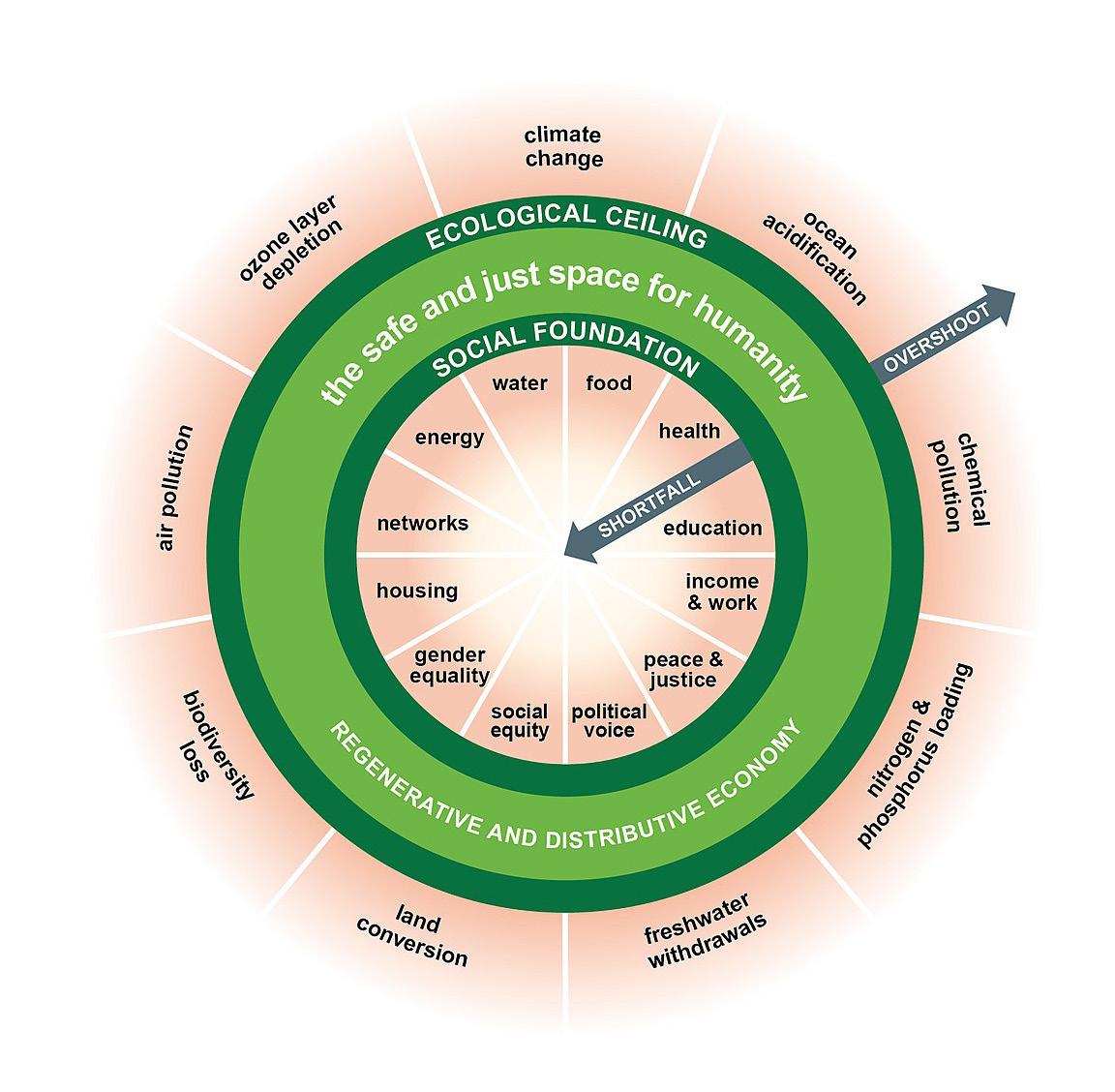
So long as each local community meets its needs through its own labor in self-reliant balance with its local ecosystems, Earth’s community of life remains in healthy balance with itself.
The economy best fulfills its purpose when we organize as communities of place in which people are empowered to fulfill their responsibility to and for themselves, one another, and Earth.
There is no universal design for local living community economies. The people of each place must adapt to their distinctive and often dramatically different circumstances presented by meadow, mountain, jungle, desert, arctic and other features of their territories. The relevant differences extend to water sources, soil quality, and sunlight availability that vary even down to micro differences on small garden plots. Life best thrives through micro-adaptation to these variations that can be achieved only by adaptive local choice-making.
To deal with its distinctive needs and opportunities while caring for its place on Earth, each community must be able to control human access to the resources in its territory, while caring for and living within their regenerative limits. So long as each local community meets its needs through its own labor in self-reliant balance with its local ecosystems, Earth’s community of life remains in healthy balance with itself and Earth. In an Ecological Civilization, securing local communities against colonization by predatory neighbors and corporations that fail to embrace their responsibility to and for the whole will be a defining responsibility of governing bodies at higher system levels.
We must accept the limitations of our human ability to control nature. We have ample evidence of the consequences of our arrogance in such efforts. Rather than controlling nature, our current priority must be to control ourselves as we facilitate the healing of the living Earth’s community of life. This in turn raises profound questions about ownership rights and responsibilities in relation to Earth.
Earth is life, the literal ground of our being. None of us created it. We all depend on it. For thousands of years, humans have organized their dominant societies around the ownership of land and the rights that ownership conveys. In common practice, there have been few limits on what an individual can own, or the right of the owner to deny others access and to contaminate and otherwise disrupt the land’s natural processes.
As ownership becomes ever more concentrated and ever more people are denied access to a means of living, rethinking rights of access to land and responsibilities for its proper care become among the most foundational issues facing humanity. We have barely begun to frame the essential questions, let alone find adequate answers.
In our emerging vision of an Ecological Civilization, power is best localized and equitably distributed. And the benefits of productive labor should go primarily to those who provide it. That all points to a preference for local, cooperative ownership.
Unless it receives a public subsidy, a business must have profits sufficient to remain viable and provide a fair and modest return to investors commensurate with risk. When ownership is local, part of the return to the owners comes from the business’s contributions to the wellbeing of the community in which the owners live. When the business is owned by its workers, workers get the full return on the value of their labor. As owners, they also benefit from the contribution of the business to the wellbeing of the community in which it does business. They also enjoy the well-earned respect of neighbors who appreciate the services their business provides. Local owners usually plan to operate for the long-term, thus aligning their interests with the long-term wellbeing of the community. It is a win-win act of cooperation.
A market economy can best be counted on to serve the community interest when decision makers live in and are known to that community. When decision makers are distant, faceless, and seek only to maximize quick profits, the essential link between business and community is broken. If the delinked business also possesses monopoly power, it can become a mortal threat.
In our emerging vision of an Ecological Civilization, power is best localized and equitably distributed.
The charter of the limited-liability, for-profit corporation is a legal instrument that, in its current form, supports the unlimited concentration of economic power delinked from accountability to the communities in which the corporation does business. Such an institution has no legitimate place in a 21st century Ecological Civilization. Far preferable are local family businesses and worker/community owned cooperatives. The Mondragon worker coops in the Basque region of Spain are among the most successful currently existing examples of largescale cooperative businesses.
Equally obsolete is the current system of monopolistic, private, for-profit banks that create money by issuing interest-bearing debt. In aggregate, that debt can only be repaid if new loans are putting sufficient new money into the system to pay the interest and repay the principle on outstanding debt. It is a system designed to crash if the money in the system does not continuously grow.
Yet the new money accrues to people in proportion to their existing financial assets, thus widening the gap between rich and poor. The drive for ever-greater monetary growth generates investments in activities harmful to people and the living Earth. It is a process that dehumanizes rich and poor alike and ultimately produces only losers. The truth is hidden by misleading language. Speculators seeking instant unearned financial gains are called investors, and money created from nothing is called capital.
Because money is just a number and the financial system is a purely human creation, if the system is not working for us, we have both the right and the means to change it. That does not mean the changes will be easy. Not only have we organized our lives around and become dependent on the predatory system. We have also put in place laws designed to protect that system rather than the people the system should serve. Of course, the laws are also human creations and thus are ours to change, but only by collective choices that the system can make extremely difficult to implement.
Money creation in a viable human future must be transparent, accountable, and supportive of productive investments that put underutilized labor and other regenerative resources to work meeting unmet needs of people and Earth. We must organize around what makes

communities most healthy rather than what makes corporations most profitable. And we must use money as a tool to serve the community. Money must never again be allowed to become an instrument of speculation and control by the few to exploit the many.
These are issues for which a fully developed eco-nomics must provide maps to guide us.
We must organize around what makes communities most healthy rather than what makes corporations most profitable.
To fulfill our responsibilities to one another and Earth, it is essential that we manage our human numbers and distribution while continually learning and evolving as individuals, families, and communities.
Life replenishes and renews itself through continuing cycles of conception, birth, maturation, adulthood, death, and rebirth. These cycles are essential to life’s resilience, regeneration, and continuing evolution toward ever-greater diversity, beauty, awareness, and creative potential.
Life’s resilience and creativity depend on maintaining its species diversity. The greater its diversity, the greater its ability to recover from disruptions like meteors, volcanoes, and rogue species. And the greater its potential to evolve.
Diversity depends in turn on keeping individual species numbers in balance. Normally life depends on predators to maintain that balance, as for example, wolves culling deer populations.
In earlier times, human population growth was checked by famine, disease, and large mammals. As we learned to protect ourselves against such threats, including through improved food security, diet, sanitation, and immunization, growth in our numbers and consumption exploded. We have now become an increasing threat to Earth and thereby to ourselves.
We will prosper as a species only as we get our numbers and relations right with one another and Earth. As Earth’s now dominant species, we must assume responsibility for ourselves - our reproduction, distribution, consumption, and care for Earth’s community of life.
A key to balancing our numbers resides in evidence that population growth slows when women are provided with education, attractive employment opportunities, and the means of fertility control.
The more daunting challenge is dealing with population redistribution as we render ever more of Earth’s places socially and environmentally unlivable. Here the key is knowing that most people prefer to live in the place they know as home if that is a viable option. We will all benefit from cooperative efforts to restore livability wherever that is possible. When such restoration is not possible, such as disappearing islands, we must achieve an orderly redistribution and resettlement of the people displaced through no fault of their own.
Our future depends on a dramatic transformation in our understanding of ourselves and our relationships with one another and Earth. It begins with getting our reproduction right and taking seriously the truth that “It takes a village to raise a child.”
The human family has more than enough abused and neglected children. What we lack is adequate attention to the care and development of all our children to assure that they achieve their full potential as intelligent, responsible contributors to the wellbeing of the whole. Imagine a world in which every child is a wanted child, loved and supported by a caring family and a caring community.
It isn’t just about childhood. We never outgrow our need for learning, nor our need for a caring community. Our need from birth is to learn to live and learn together. Conventional textbook education is distinguished by its isolation from the experience of living, its fragmentation of knowledge in an interdependent world, and its preparation of our young for a world that mostly never was and never will be.
The children of early humans learned by participating in the daily life of their tribe or village. Modern education confines our children to regimented classrooms, separated from the life of community and from members of generations other than their own. Classroom activity centers on memorizing information printed in specialized textbooks, each devoted to an isolated and distinctive discipline mostly irrelevant to the student’s real world non-school experience.
It is no wonder that we become so susceptible to media manipulation. Much of our childhood is devoted to conditioning us to accept without question what we are told by presumed experts and authority figures. It is a setup for our misdirection by books and experts promoting the fictional maps of ego-nomics, as well as by unprincipled political extremists. Social advances depend on challenging established ideas and frameworks. We must continuously and accurately assess our maps both old and new. An adequate modern education will include development of critical thinking skills.
The corruption of the once respectable discipline of economics began in the mid-19th century. A group of influential economists suffering from a bad case of physics envy sought to achieve a stature for themselves within the social sciences comparable to that of physicists within the physical sciences. They concluded that the key was to reduce their discipline to mathematical models.
This required quantification. Money was a simple and
readily available metric. So, they embraced money as their measure of economic performance. In so doing, they disconnected economics from the reality of living people dependent on a living Earth.
They abandoned the thoughtful and illuminating treatises of the founders of their discipline. Expelling social, institutional, and political analysis, they reduced economics to mathematical formulas with which they predicted with confidence without testing that: “If the world looks like x, then the outcome will look like y.” Money, not the wellbeing of people and nature, became their defining measure of value.
These ideas didn’t gain significant traction until after the disruptive events of the 1960’s. It was a chaotic decade of the Vietnam War; the civil rights movement; antiwar protests; the war on poverty; the political assassinations of John F. Kennedy, Martin Luther King, and Robert Kennedy; and the hippie counterculture of Woodstock, free love, and psychedelics. These events threatened the established order and
spurred wealthy financial interests to mobilize in defense, in part through aggressive funding and promotion of academic and media proponents of the neoliberal ego-nomic ideology of economic growth backed by unregulated free markets.
Growing GDP became our defining societal priority. And the institutions of government became servants to the institutions of business.
We cannot eat, drink, or breathe money. It will not warm us on a cold night. Nor stabilize the climate. Money can buy only that which is for sale. It has no existence outside the human mind and will be worthless on a dead Earth.
The power of money resides in the fact that the more money an individual has, the more easily he or she can out-bid others in the marketplace and game the financial system to inflate their own financial assets without the need to produce anything of value in return.
Some control transnational banks that create money by issuing debt. Some create fictitious assets known
as derivatives and crypto currencies. Others specialize in bidding up the prices of real and fictitious assets. None of this creates real value.
Creating more money only benefits humanity if it puts people to work producing beneficial and equitably distributed products in a balanced relationship with living Earth.
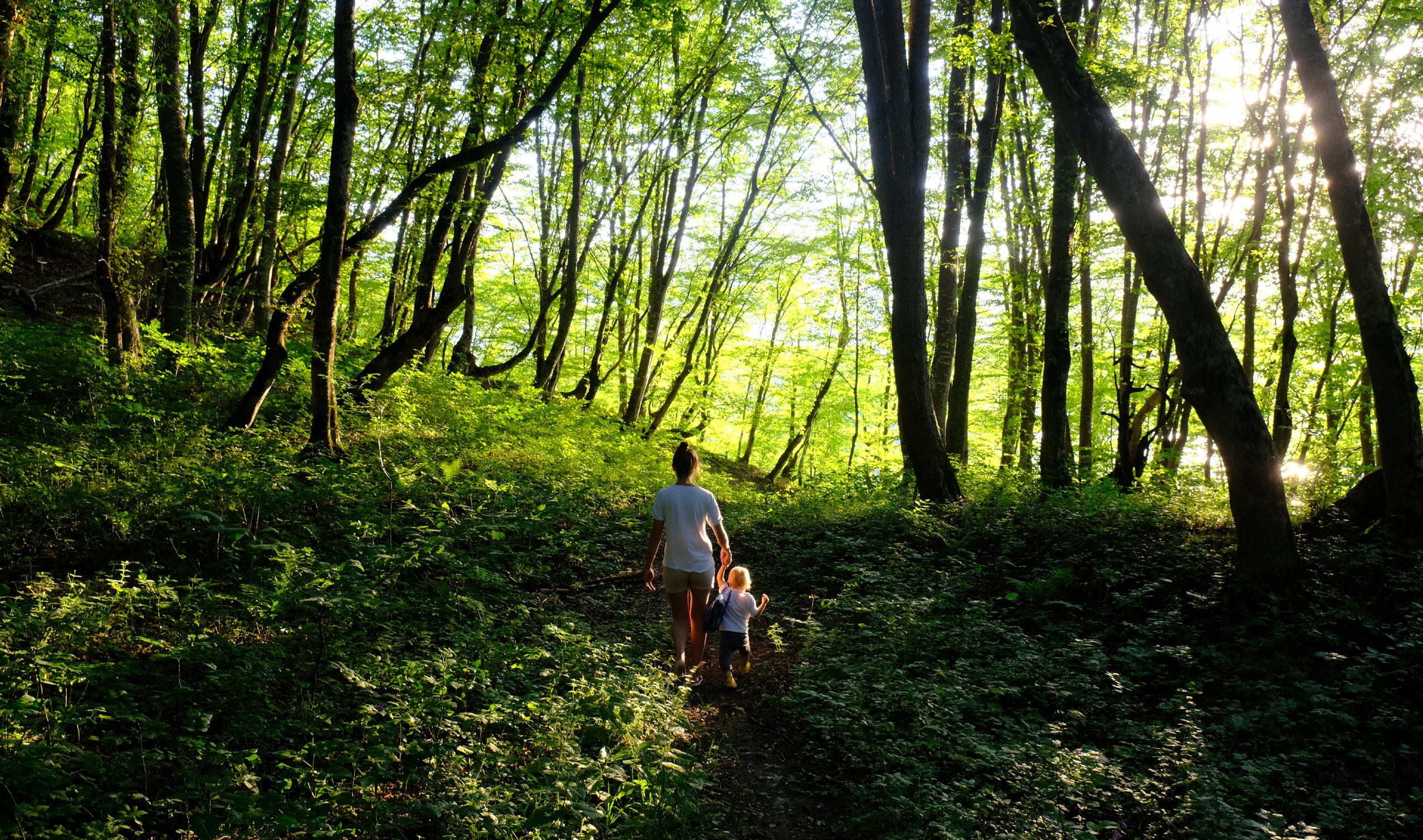
Ego-nomics focuses on growing income and financial assets in disregard of whether real value is created or destroyed in the process. Such a focus elevates sociopathy to a human ideal and exempts economic predators from moral responsibility for the harmful social and environmental consequences of their actions.
We have for too long succumbed to this intentional and well-funded subversion of moral responsibility. We can no longer ignore the growing gap between the promise of ego-nomics that growing GDP will bring prosperity for all and the reality of spreading despair as the economy excludes the many and destroys Earth’s capacity to sustain life.

The choice of the lens through which mapmakers view the territory determines what they see and thus, what they map. Different lenses result in very different maps that guide the users to very different choices with very different outcomes.
Through the money lens of ego-nomics, we see the world as a kind of winner-take-all computer game in which players compete to grow personal pools of financial assets. These assets in turn give the winners access to a seemingly limitless assortment of aggressively advertised products, including exotic vacations, elegant estates, ocean going yachts, and luxurious private airplanes. If you lose, there will surely be jobs tending the kitchens, gardens, and toilets of the winners.
Through the living lens of eco-nomics, we see a world of intelligent, interdependent, self-aware, choice-making beings interacting through their shared labor to create and maintain the conditions essential to their individual and mutual existence. The rewards, which feature material sufficiency and spiritual abundance for all, are of a fundamentally different nature.
In the Ecological Civilization of our future, money will surely have its place. But our primary lens will be one through which we see life in the fullness of its expression. Through that lens we can create maps to guide us to a world of healthy living people on a healthy living Earth. The striking contrast in the view through the ego-nomic and eco-nomic lenses is summarized on the following table.
There are only individuals. Community is an illusion.
GDP is a defining measure of economic performance.
There are no material limits to human consumption and economic growth.
Financial return is the measure of an investment’s benefit to society.
Market price is an objective measure of the value of natural assets.
Economics is best taught and promoted to the public as complete and settled science and a definitive guide to creating and managing a successful economy.
Money is capital and a key constraint in addressing society’s needs. Society’s wealth grows as its money grows.
The owners of financial assets are society’s wealth creators and should be rewarded accordingly.
Reducing all values to money allows for quantification and makes economics an objective science.
Humans by nature are individualistic, competitive, aggressive, and self-serving.
We all do best when we compete to maximize our personal advantage.
Limitless material consumption is the path to human happiness.
Life exists only in community. I am because you are, and we are.
GDP measures the exchange of money without regard to its beneficial or harmful effects. It is not a measure of wellbeing.
Earth’s regenerative systems are finite. We must learn to live within their limits.
Public investments that produce no financial return are often the most beneficial for the most people.
The value of the regenerative systems that maintain Earth’s air, water, and soils is beyond price.

By its nature as an applied discipline in a constantly changing world, economics must draw from all sources of human understanding and be constantly updated.

Money is just a number. Central banks create it with a computer key stroke. It is a tool, not a purpose.
Those who do productive work are society’s real wealth creators and should be rewarded accordingly.
An economics that values life only for its market value is an ideology, not a science.
Mentally healthy humans are caring, peaceful, and derive pleasure from helping others.
We all do best when we look out for and care for one another.
Material consumption beyond sufficiency is a distration. Happiness is most often a product of meaningful relationships.
Human viability depends on advancing Emergency action in ways that facilitate Emergence of the culture, institutions, technology, and infrastructure of an Ecological Civilization guided by the maps of a 21st century eco-nomics.
These are some action steps on the path to Emergence that follow from the Ubuntu Principle and its corollaries.
• Break up concentrations of corporate power, including private banks. Restructure the individual pieces to support equitable, locally rooted participation in ownership. And assure that every business is dedicated to and ultimately accountable for fulfilling a public purpose beneficial to the communities in which it does business.
• Take democracy to the next level as a participatory process of community self-organization, not just a competitive voting contest between two or more candidates from opposing political parties funded by wealthy patrons.
• Replace GDP as the primary measure of economic performance with measures of the health and wellbeing of people, communities, and nature - giving priority to equality, material sufficiency, and spiritual abundance for all.
• Eliminate financial speculation and free individuals, community businesses, and governments from perpetual debt bondage.
• Transform our relationship to nature to restore and enhance its regenerative health and beauty as we learn to nurture ourselves in ways that nurture all.
• Organize bioregionally defined political jurisdictions around urban hubs with strong rural-urban links that seek to optimize regional environmental and labor self-reliance. Eliminate inefficient land use by converting suburbs to rural-urban use.
• Eliminate gas powered vehicles and redesign infrastructure to minimize dependence on private cars in all but remote rural areas.
• Minimize air travel by vacationing locally within local ruralurban jurisdictions and organize all but local meetings and conferences as web conferences.
• Strengthen non-monetized relationships between people and between people and the lands and waters that sustain them.
• Encourage responsible community-centric parenting and child development consistent with a just and prosperous future for all.
• Invest in life sciences research advancing understanding
of the organizing principles, structures, and processes of healthy living systems.
• Accelerate social innovation, adaptation, and learning by nurturing cultural diversity and removing intellectual property rights impediments to the free and open sharing of beneficial knowledge and technology.
• Transform economics and management education to provide future leaders with the knowledge and skills needed to lead institutional transformation and the creation of resilient self-governing communities.
• Organize material processes around continuous circular flows and minimize movement of physical and energy resources both within and between self-reliant bioregional communities.
Hope and possibility depend on eliminating the imperial caste structure as we awaken to four foundational truths:
1. There are no winners on a dead Earth,
2. To live is to labor,
3. It is our true nature as humans to care and share, and
4. It is now within our means to create a world of peace, beauty, creative opportunity, material sufficiency, and spiritual abundance for all grounded in the wisdom of our ancestors.
In a humanized world of mutual caring and sharing, the material needs of most individuals will be modest and readily accommodated. We will use the collective surplus labor of humans and nature to insure one another against special needs and circumstances that we cannot realistically plan and prepare for as individuals.
I might die tomorrow. Or I might live to 100. I may be able to care for myself to the end. Or not. Individually, I cannot adequately prepare for what I cannot know. Nor can I realistically acquire the surplus to cover all possible eventualities for myself and the loved one’s who may depend on me.
As a caring community, however, we can estimate with reasonable accuracy how many among us will live to 100. How many of those will need special care. And how much of society’s surplus must be set aside in preparation. It’s called insurance. For most of us it requires a caring community.

Living Earth has limits. It still, however, produces sufficient surplus to secure material sufficiency and spiritual abundance for all - if we make that our common goal.
The surplus of life’s labor is not sufficient to continue bearing the burden of a caste system devoted to controlling the many so a few can indulge in egotistical displays of privilege on a dying Earth. The more of humanity’s labor we devote to maintaining the system of domination, the less that is available to secure life’s wellbeing and the more rapid the living system’s collapse.
As individuals, we cannot transform the failed economic system. Together we can.
Meaningful and fulfilling labor is a natural part of our human expression as living beings. Labor in a fully functioning Ecological Civilization will include three essential elements.
1. The physical labor required to maintain life’s essential conditions against the forces of entropy.
2. The intellectual labor required to constantly test and advance the individual and collective maps of our ever-evolving territory.
3. The spiritual labor required to continuously renew our sense of individual and collective connection to all that is.
Human institutions are purely human creations. Their only legitimate purpose is to serve the people on whom their existence ultimately depends. If institutions fail to serve us, then it is our right to eliminate or transform them.
Civil society is the sector where the power of We the People ultimately and properly resides. Consequently, in the fully functioning Ecological Civilization, government and business sectors must be creations of and accountable to a civil society of people who embrace the rights and responsibilities of their citizenship at all system levels from the local to the global. We can be citizens of only one locality. But we are all citizens of Earth - and the many levels in between. This must be acknowledged by any truly democratic system of self-governance.
As the disruptions of COVID-19 remind us of our interdependence, they create an unprecedented opportunity to unite in common cause to address our current Emergency in ways that advance Emergence of the culture, institutions, technology, and infrastructure of the Ecological Civilization on which our viability and wellbeing depend.
Given the speed at which environmental and social collapse are playing out, we now have a decade - if that - to achieve a dramatic redirection of the human course as a now globally interdependent species. There was a time when change of such magnitude took centuries, even millennia. But the rate of human change is increasing geometrically, and we now have the common language and communications capabilities needed to navigate an essential change of course consciously and intentionally with previously unimaginable speed.
As we contemplate the seriousness of the crisis at hand and the opportunity within our reach, we might note that ultimately this is not just about Earth and the human species. The evolution of life is an ongoing process in which Earth appears to have a special place.
Science currently estimates the number of stars within the observable universe at 70 billion trillion. Nearly all known stars have planets, the total of which would be an even greater number. We have yet to identify any planet other than Earth that we have reason to believe has Earth-like surface conditions that can support life as we know it. The consequences of our current choices bear not just on us. They bear on the continued evolutionary unfolding of life in the universe. This marks the scale of our current responsibility.
There is no easy path. Tragedy and challenge lie ahead. The longer we wait, the more difficult the transition be-comes and the less likely our prospect for success. Our task is to recognize and act on the Emergency at hand, and to do so in ways that enable the Emergence of a civil civilization guided by the maps of an eco-nomics dedicated to the wellbeing of life. The time is now. The choice is ours.
Strengthen nonmonetized relationships between people and the lands and waters that sustain them.
David C. Korten is an American writer, lecturer, engaged citizen, student of psychology and behavioral systems, a prominent critic of corporate globalization, and an advocate of Ecological Civilization. He is founder and president of the Living Economies Forum and an active member of the Club of Rome, a member of the International Advisory Council of the International Academy for Multicultural Cooperation, and an Ambassador of the Wellbeing Economy Alliance. Co-founder and former board chair of YES! Magazine (now YES! Media), he is the author of numerous influential books, including the international best-selling When Corporations Rule the World and The Great Turning: From Empire to Earth Community. His other books include: Change the Story; Change the Future: A Living Economy for a Living Earth; Agenda for a New Economy: From Phantom Wealth to Real Wealth; and The Post-Corporate World: Life after Capitalism. He holds earned MBA and PhD degrees from the Stanford Graduate School of Business, served on the faculties of the Harvard Business School and Harvard School of Public Health, and worked for thirty years in international development in Africa, Asia, and Latin America. Find David on Facebook, Twitter and his website, davidkorten.org.

This paper is the current version of a continuing work in progress from which others are free to draw with or without attribution. It may be freely shared, reproduced, and reposted in whole or in part for so long as there is no restriction on further free distribution.
Individual
Organizations: Center for Process Studies, Charter for Compassion, Club of Rome, Earth Charter International, Institute for Ecological Civilization, Institute for Postmodern Development of China, International Academy for Multicultural Cooperation, Living Economies Forum, Local Futures, Parliament of the World’s Religions, Praxis Peace Institute, Wellbeing Economy Alliance, and YES! Media.
In Memoria: Thomas Berry, Willis Harman, Mae-Wan Ho, and Donella Meadows.
As the earth moves beneath our feet and new mountains emerge from the depths of the sea, All that was hidden must now be revealed. With nothing left to cling to and no one to blame, We are at last alone with ourselves, immersed in the ocean within, diving below the surface again and again while it all rises up to meet us. And so we learn to breathe into the turbulent waters of our emotions
To find the inner anchor that holds still as the winds of change and uncertainty blow through our minds, our homes, our World, Nowhere left to run Right here, Right now, Open, Ready It is time to return to Wholeness


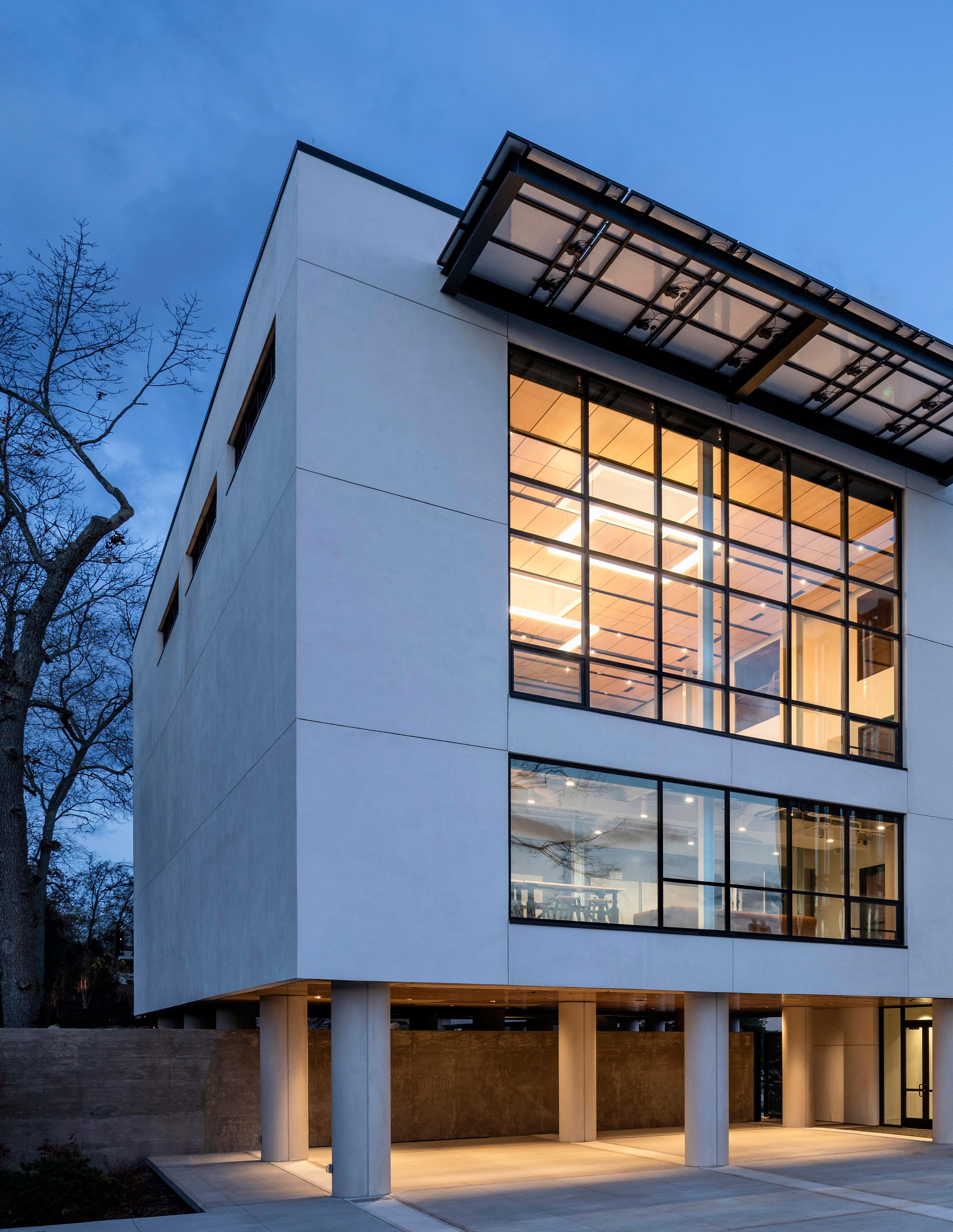
 Photo: Anton Grassi
Photo: Anton Grassi
HMTX World Headquarters is being billed as the greenest building in the State of Connecticut. Designed around the Living Building Challenge, the building is on track to achieve all the petals of the LBC excluding water, while still being exemplary in that area as well. The project is a mixed use facility with offices, a product design innovation and fabrication maker facility, artist-in-residence housing units, and space that serves as an art gallery for the company’s private art collection. Powered completely by renewable energy on-site, the project focuses on art, technology, and product creation. The stately design showcases that it is possible to balance modern design–inspired by Bauhaus design principles where form is derived by function–within a deeply biophilic and deep green philosophical framework.


Located in an urban setting, the building offers a contemplative retreat from the noise of the world, providing a place to slow down and encourage creativity, collaboration, and well-being. Most importantly, it serves as a beacon of hope for a more ecologically conscious and regenerative future.


Far Left: View through south staircase.
Top Left: Spiral stair and walnut cabinets of Great Hall.

Bottom Left: Bridge view.
Bottom: Wide view of corporate office zone.
Photo: Paul Godwin Photo: Paul Godwin Photo: Paul GodwinThe building sits perched lightly upon ‘piloti’ columns above an ancient granite slab, and is affectionately called the “The House Upon the Hill” by the client and visionary behind the project. Simple in plan, simple in section, and elegant in execution, the building is designed to nestle into its landscape. Modern in its aesthetic, yet deeply biophilic in its experience, the project provides connection to nature at every turn, with each interior space linked to the outside from at least three orientations. The senses are fully engaged as one walks through the project, encountering the sounds of water falling, the touch of living plants and green walls, the sights of carefully controlled daylight, and the feeling of prospect and refuge offered on every floor.
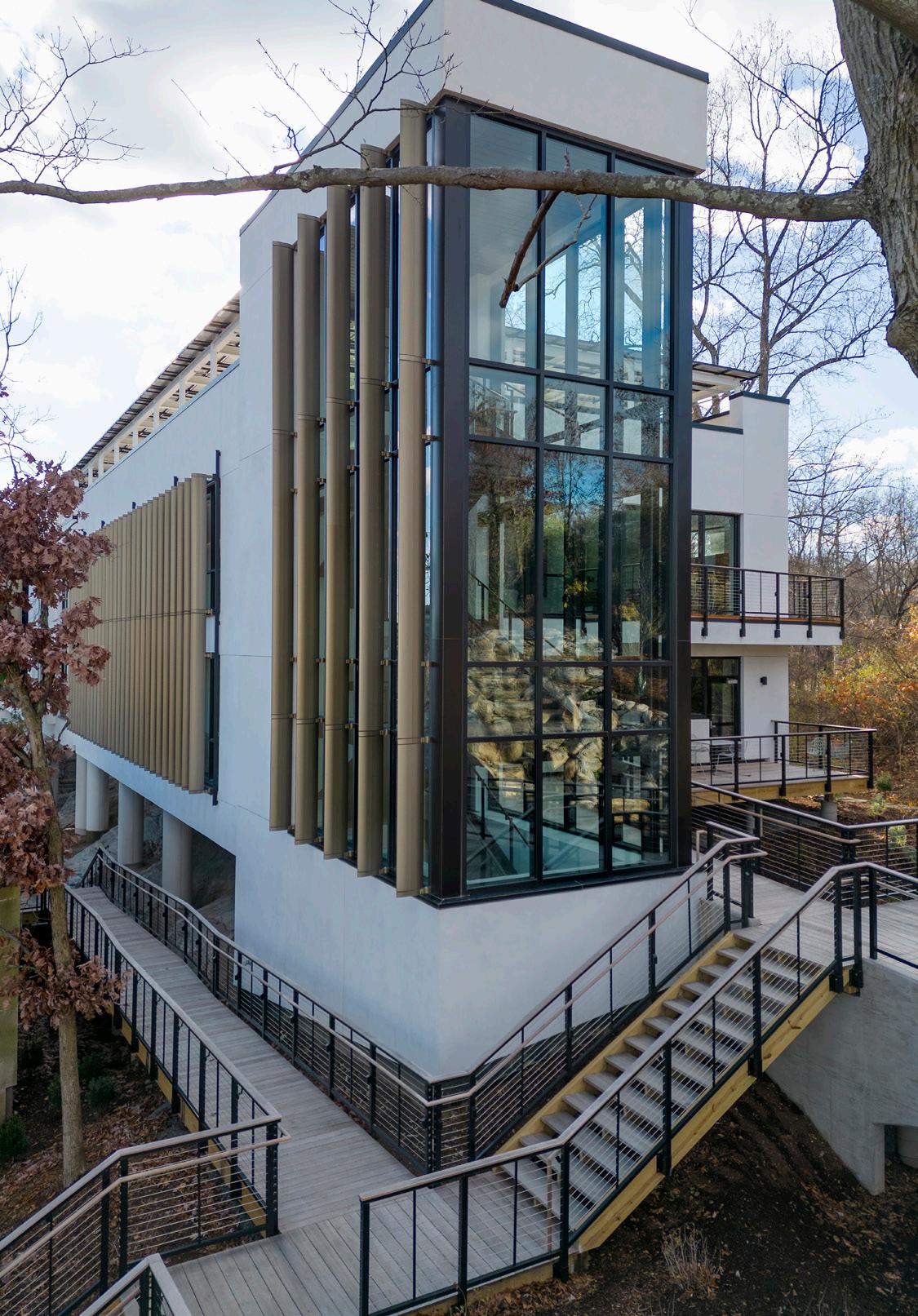
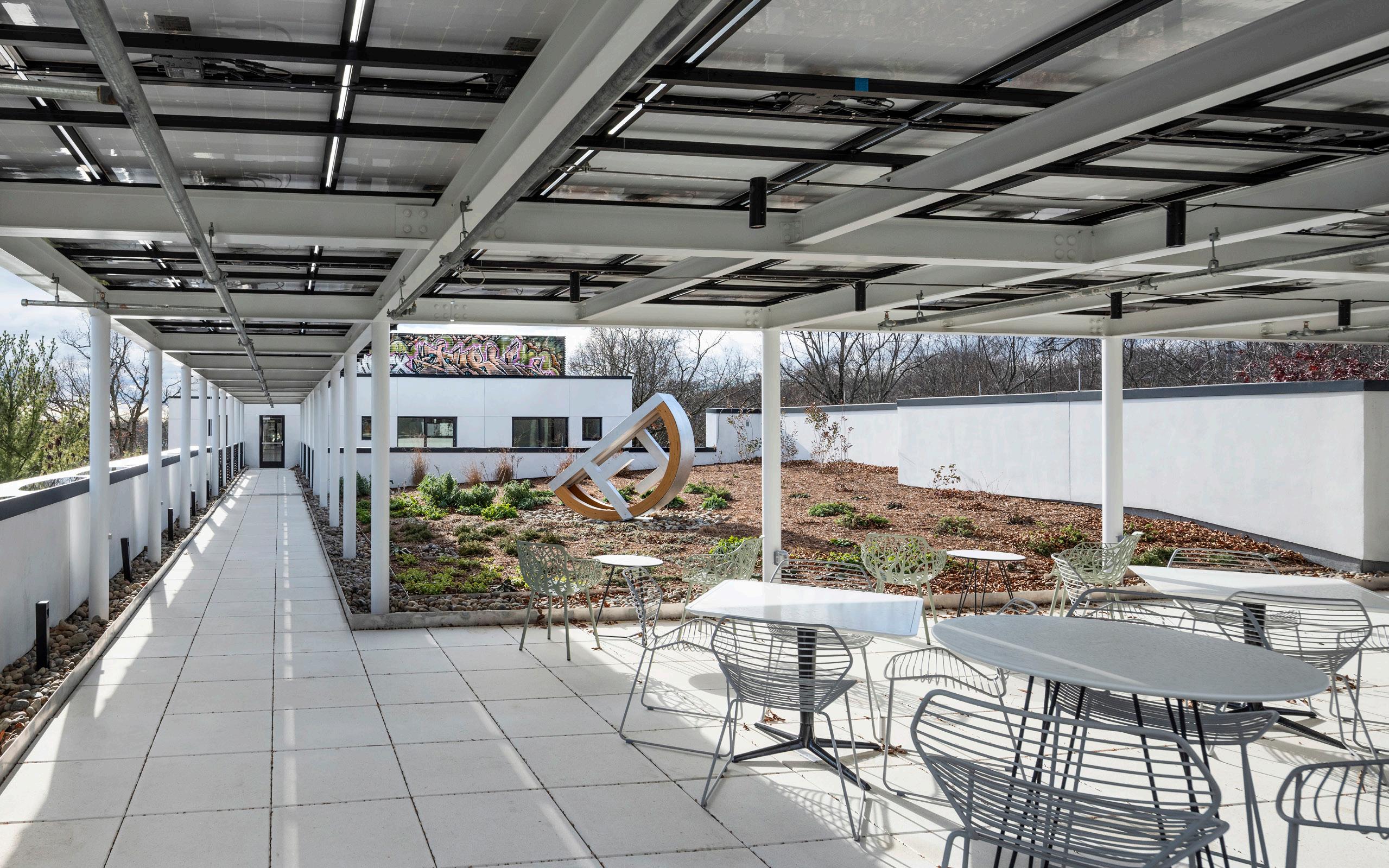
Upper Left: North stair towers.
Upper Right: South stairs interior.

Lower Left: Rooftop terrace with solar canopy.
Lower Right: Close up of plants and transition threshold.
 Photo: Paul Godwin
Photo: Paul Godwin
Photo: Paul Godwin
Photo: Paul Godwin
 Photo: Anton Grassi
Photo: Anton Grassi
Left: Dusk view of south facade.
Right: View of maker space.

Bottom: Great Hall (prior to move-in).
 Photo: Anton Grassi
Photo: Anton Grassi

1936 - March 2022)
By Jason F. McLennanI never met Christopher Alexander, but like thousands of others in our profession, I count him as a major influence on my thinking and work. Over the last half century of architectural theory development, few others have made such a strong mark on so many. I first learned about Alexander as a student at the University of Oregon’s school of architecture in the early 1990s. Alexander didn’t teach there at that time, but his shadow loomed large on the school, as many of his former colleagues and disciples from Berkeley taught there and taught me.
His book–The Oregon Experiment, published in 1975–was an important contribution to the development of the U of O campus and was a testbed for ideas that eventually found their way into his masterpiece - A Pattern Language (1977). Alexander believed that feeling, experience and placemaking were the hallmarks of good design, and he resisted the idea of architectural ‘fashion’ and many examples of modern architecture that ignored the timeless patterns that successfully shape human habitats all around the world for centuries (his 1979 book The Timeless Way of Building expands on this). Many of my professors at the time taught Alexander’s ideas and shared his thinking about placemaking as essential to our craft, and as a young architecture student, it opened my eyes to an entirely different way of looking at interiors, whole buildings and cities. Finally there was an explanation for why some
places ‘worked’ while others ‘failed’, conveyed with clarity and elegance.
When Alexander published A Pattern Language it created immense dialogue around architectural theory and has been a best seller for decades now. It is one of the few books I own that I count as essential on my bookshelf to this day, and is perhaps the one I recommend the most to clients, as it’s particularly useful as a tool to help non-practitioners understand design and design relationships. The idea that ‘patterns’ exist in the places we love and hate can be understood and interpreted was profound. The idea that such patterns could scale up from the small (a single room) to a building, to an entire community as a coherent design theory, opened up a light in my head that became a major contributor to my thinking around the Living Building Challenge published in 2006.
Nature itself relies on pattern relationships that are greater than the sum of their parts, and it is this ‘essence’–this quality without a name, born from right pattern relationships–that is at the heart of what we seek to understand as regenerative designers. The idea that we could in fact describe relationships and design performance that could also transcend scale and transcend locations, to create a positive series of outcomes for human existence, greatly influenced my thinking when I later coined the term ‘scale -jumping’ and the idea that the LBC can be used as a philosophical framework for everything from products to buildings to communities.
From 2008-2013 I developed with others at the Living Future Institute a series of Living City patterns that created a philosophical underpinning for the Living Community Standard now in use for a decade. When discussing design with all my clients, I often in the programming phase seek to identify with them key ‘patterns’ that will guide the success of their projects. It is a powerful tool and framing for discussion that I directly owe to his work.

Alexander died at 85 years of age in March, but his ideas and intellectual contributions to architecture and sustainability live on. This edition of Love + Regeneration is dedicated to him.

People are
nourished by the process of creating wholeness.
 By Galen Carlson
By Galen Carlson
Each year, thousands of people embark on a pilgrimage, setting out for a country rich with history and tradition that borders the Mediterranean Sea. No, not Israel... Italy!
For this pilgrimage is not to Jerusalem, but rather to Bologna, and to a gathering steeped in its own storied legacy: CERSAIE.
The International Exhibition of Ceramic Tile and Bathroom Furnishings (CERSAIE) has been taking place in Bologna for nearly half a century, and 2022 marked its first full-bodied return to form since before the pandemic. This year, I – alongside over 91,000 fellow designers, distributors, journalists, and tile-enthusiasts – flocked to the Bologna exhibition center to attend the celebrated event.

As part of the North American delegation led by
Christine Abbate and the Novità PR group, I was especially curious to investigate whether the Italian ceramics industry was working to incorporate sustainable principles into the manufacturing and distribution of their world-class product. Much to my astonishment and delight, I quickly learned of the many ways in which Ceramica Italia is paving the way for sustainable tile production worldwide – particularly with the 2021 launch of ISO, the first international standard on product sustainability.
The ISO standard is a third-party evaluation system that certifies the sustainability of products, using 38 distinct indicators as achievement metrics. These indicators are spread between three broad categories – environmental, social, and economic – and were carefully curated by an international panel of researchers to be universally applicable to nations worldwide. Impressively, every single Italian tile manufacturer meets or exceeds the requirements set by the standard, a feat no other nation can claim.
In addition to this exciting new method for promoting building material transparency, I learned of many other ways in which Italian ceramics are leading the charge towards sustainable production. The industry lends itself well to recycling and reuse, with Italian manufacturers typically recovering 100% of raw and cooked material waste to be reintegrated into the next batch. Tile production is also extremely water-efficient, reusing 100% of internal

wastewater and absorbing an additional 7% of external wastewater produced by other industries.
Necessity is often the mother of invention, and rising natural gas prices due to the conflict in Ukraine have prompted tile manufacturers to quickly overhaul and automate many of their factory components. During a tour of a sprawling Casal Grande factory, I was shocked to find the facilities a near ghost-town – massive, interconnected networks of conveyors and machinery operating almost entirely autonomously. In efforts to further reduce both their carbon footprint and their dependency on natural gas, some Italian factories are researching cutting-edge hydrogen-fueled kilns, which – if successfully implemented – promise a far cleaner, cheaper, and more efficient method for firing tiles.
At the end of five all-tooshort days at CERSAIE 2022, I departed Bologna with a real sense of excitement for the innovations and commitment to sustainable
“...ItalianAward-winning “Riggiole” tiles, by Fioranese + Davide Tonelli
development exhibited by Ceramica Italia.

The ISO standard is an impressive step toward industry transparency, and promises a wealth of potential crossover with the values and priorities identified in the Living Building Challenge and our own work in the realm of regenerative design. As the need for building material transparency becomes increasingly paramount, efforts like these give me hope that other industries steeped in years of tradition can continue to innovate and challenge the status quo.
The ineffable beauty of Italian ceramics has endured for centuries. Perhaps now, the efforts of that same industry can help shift the paradigm, ensuring manufacturers are doing everything they can to preserve the ineffable beauty of something far more precious than tile – that of our very own planet.
Natural gas kiln in Casalgrande Padana factory
In July 2022, McLennan Design merged with global architecture and design firm Perkins&Will to accelerate and scale up decarbonization. One of the world’s leading multi-disciplinary regenerative design practices, McLennan Design focuses on deep green outcomes in the fields of architecture, planning, consulting, and product design. The firm uses an ecological perspective to drive design creativity and innovation, reimagining and redesigning for positive environmental and social impact.
Founded in 2013 by global sustainability leader and green design pioneer Jason F. McLennan and joined by partner Dale Duncan, the firm dedicates its practice to the creation of living buildings, net-zero, and regenerative projects all over the world. As the founder and creator of many of the building industry’s leading programs including the Living Building Challenge and its related programs, McLennan and his design team bring substantial knowledge and unmatched expertise to the A/E industry. The firm’s diverse and interdisciplinary set of services makes for a culture of holistic solutions and big picture thinking
Jason F. McLennan is considered one of the world’s most influential individuals in the field of architecture and green building movement today, Jason is a highly sought out designer, consultant and thought leader. The recipient of the prestigious Buckminster Fuller Prize, the planet’s top prize for socially responsible design, he has been called the Steve Jobs of the green building industry, and a World Changer by GreenBiz magazine. In 2016, Jason was selected as the Award of Excellence winner for Engineering News Record- one of the only individuals in the architecture profession to have won the award in its 52-year history.
McLennan is the creator of the Living Building Challenge – the most stringent and progressive green building program in existence, as well as a primary author of the WELL Building Standard. He is the author of seven books on Sustainability and Design used by thousands of practitioners each year, including The Philosophy of Sustainable Design. McLennan is both an Ashoka Fellow and Senior Fellow of the Design Future’s Council. Jason serves as the Chief Sustainability Officer at Perkins&Will and is the Managing Principal at McLennan Design.



